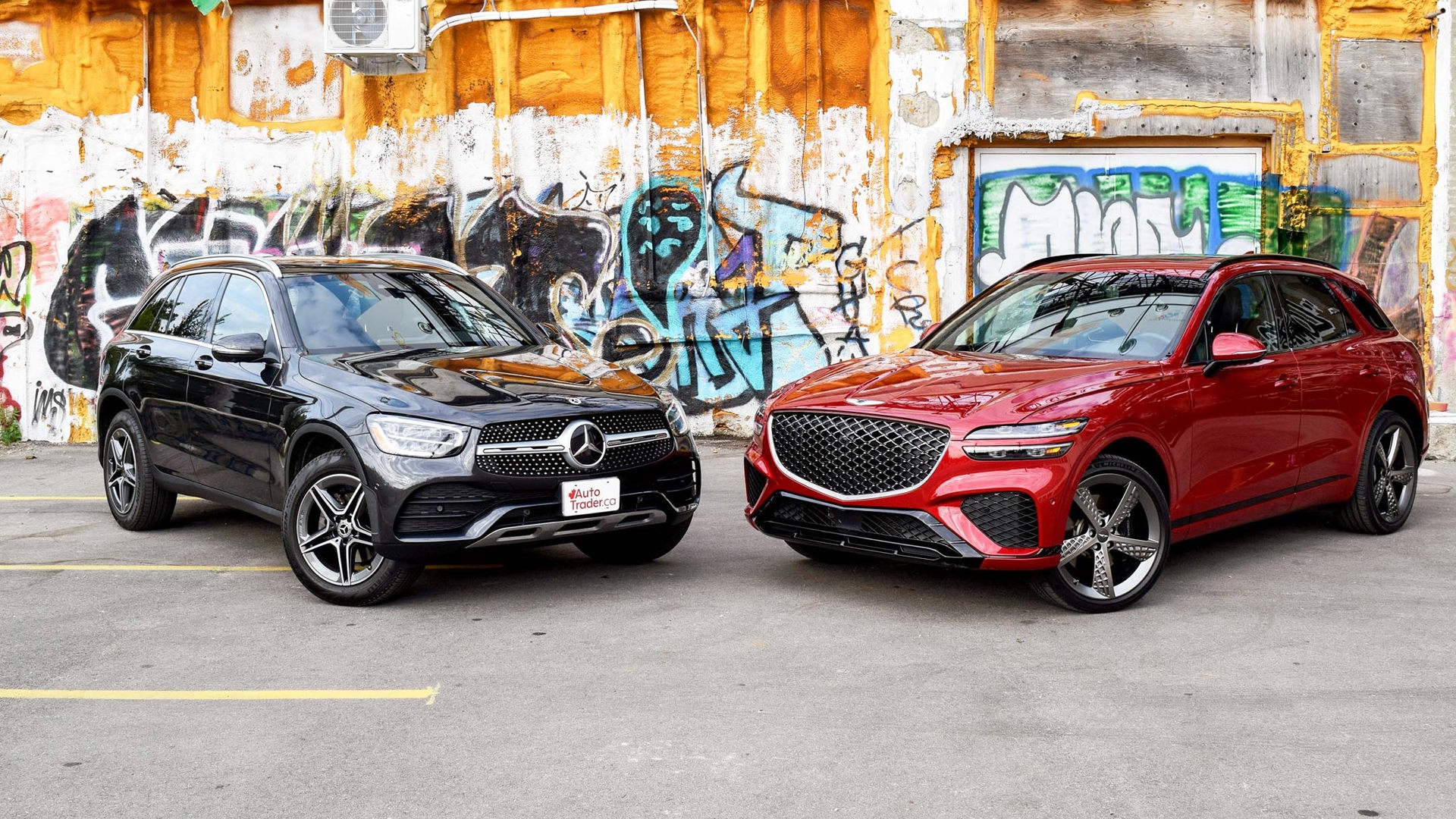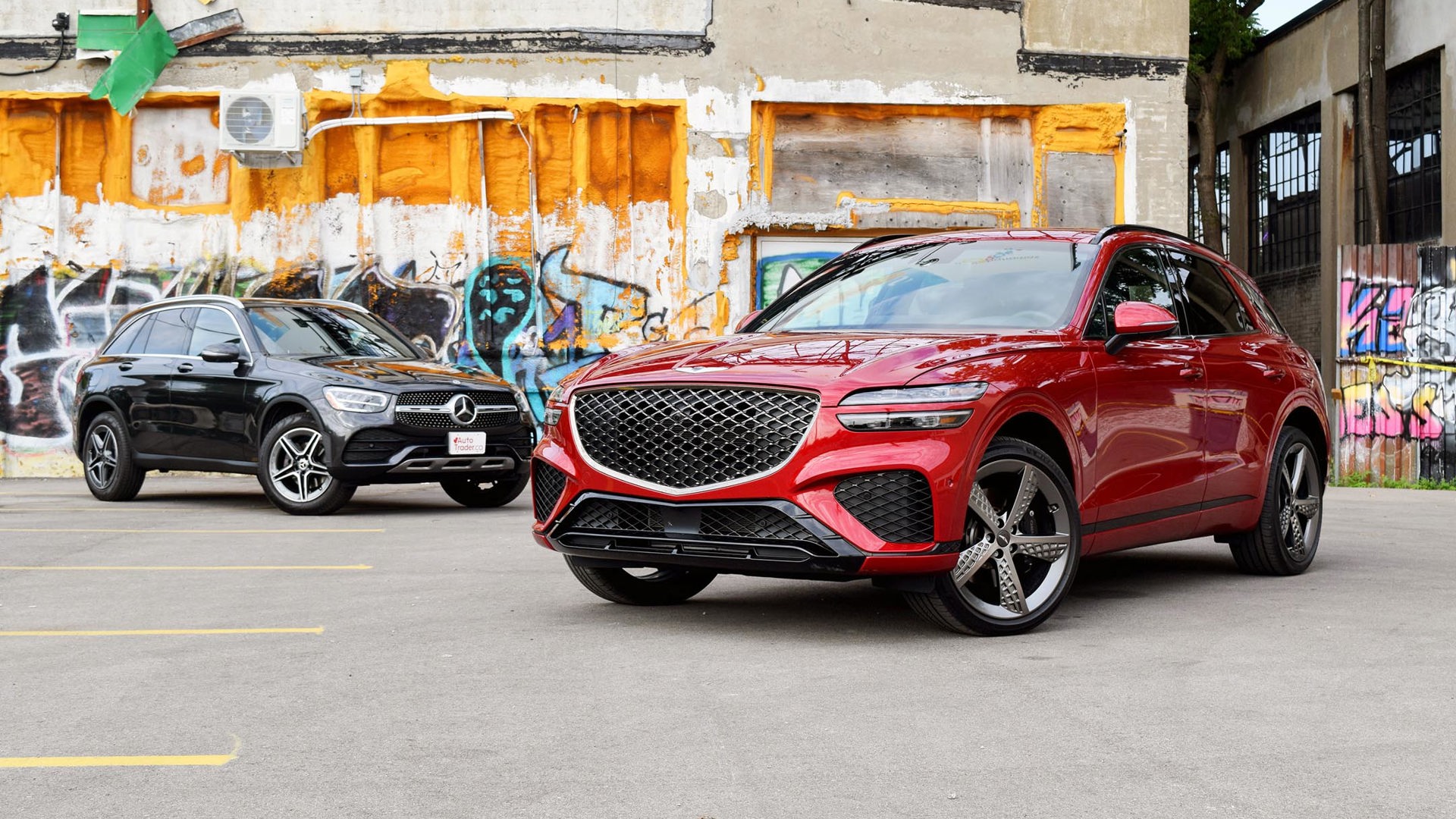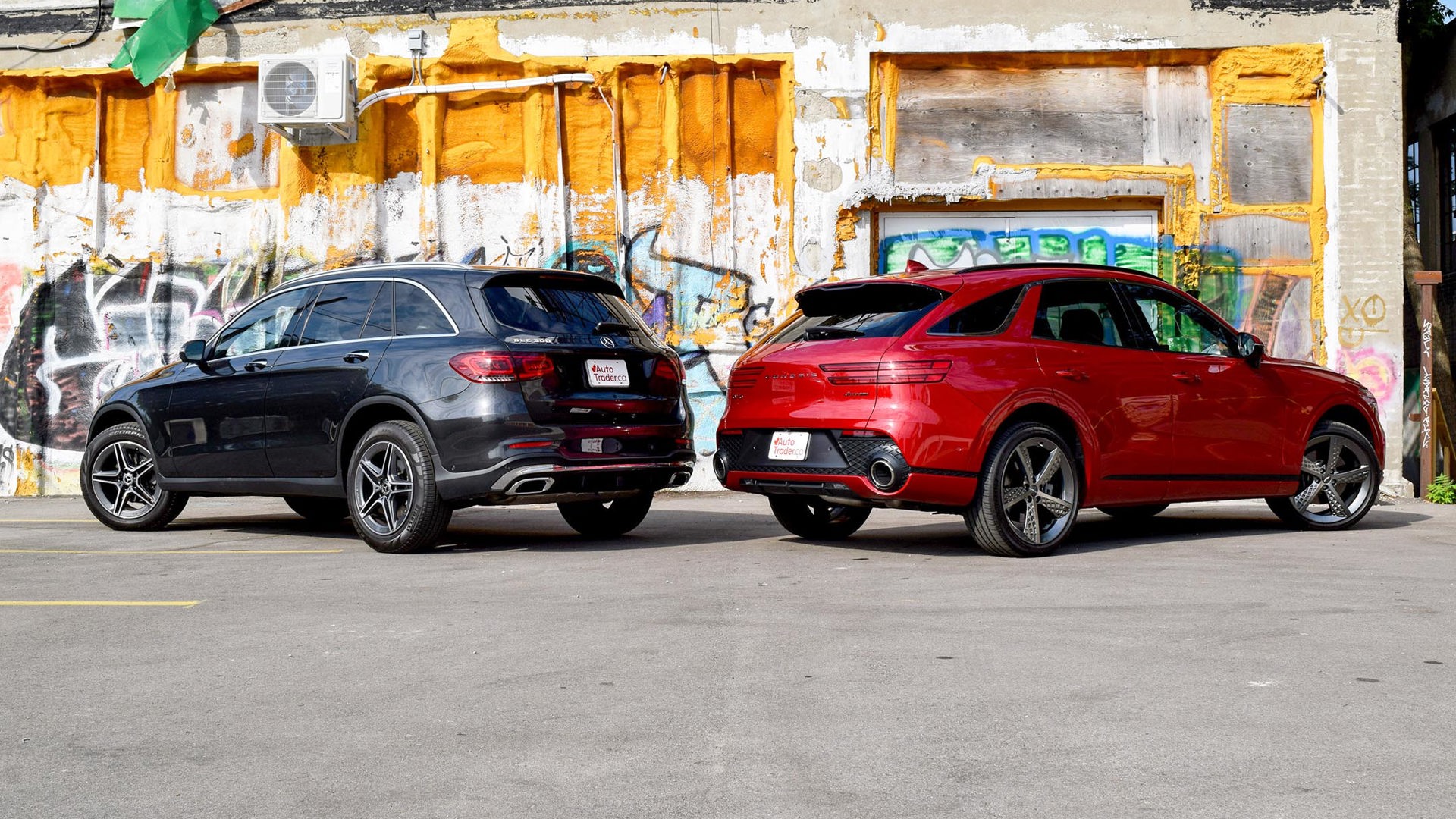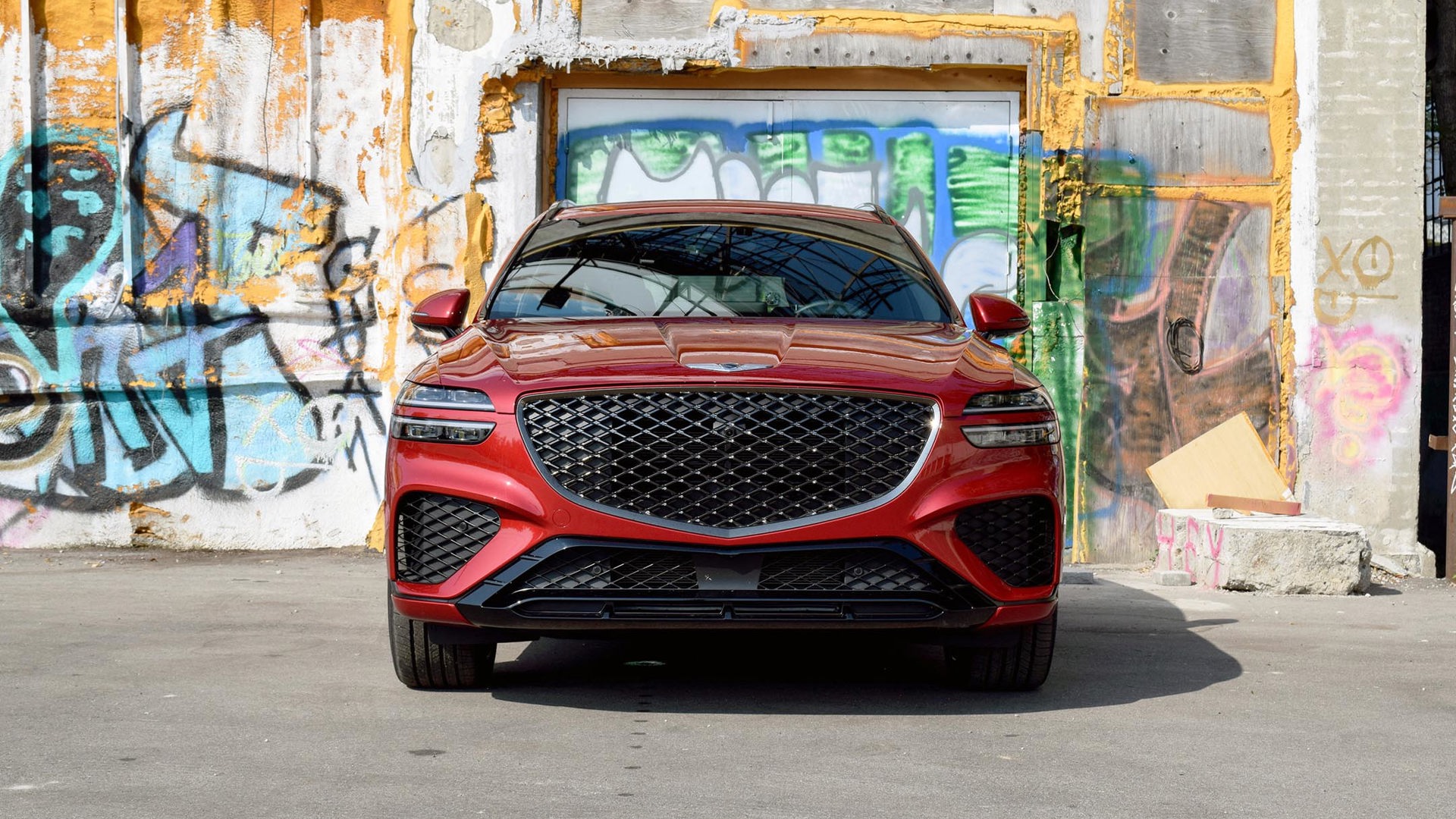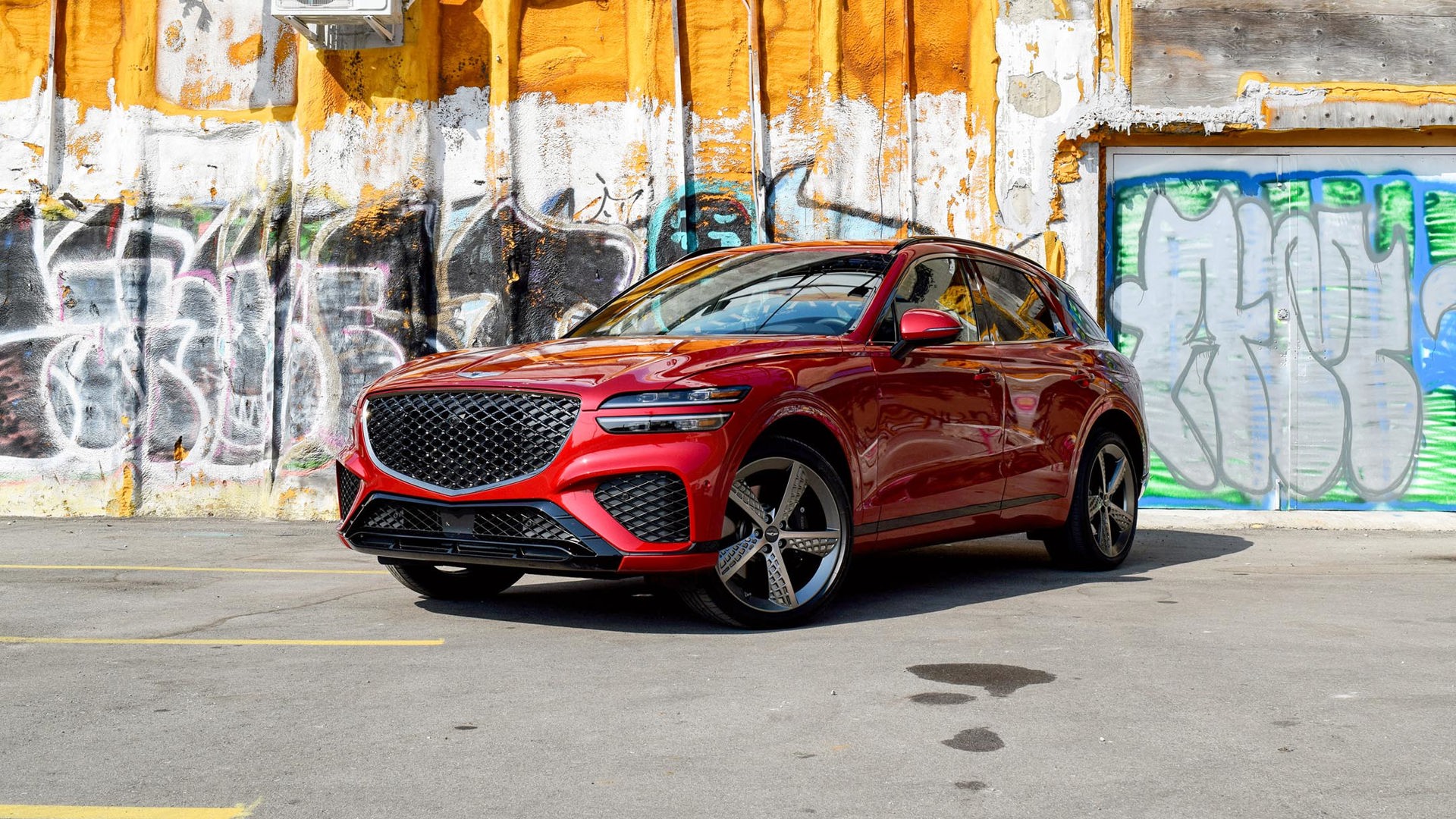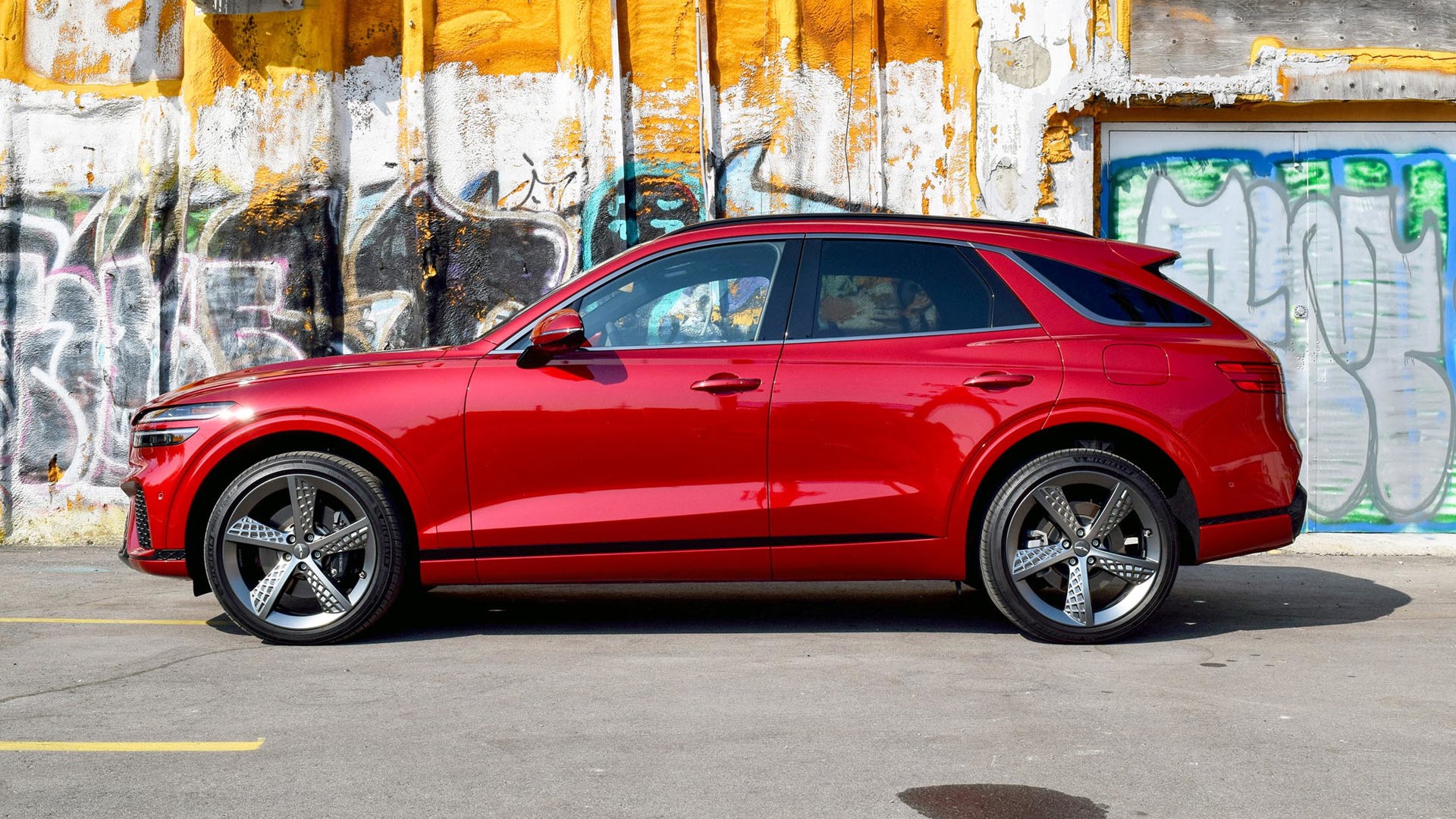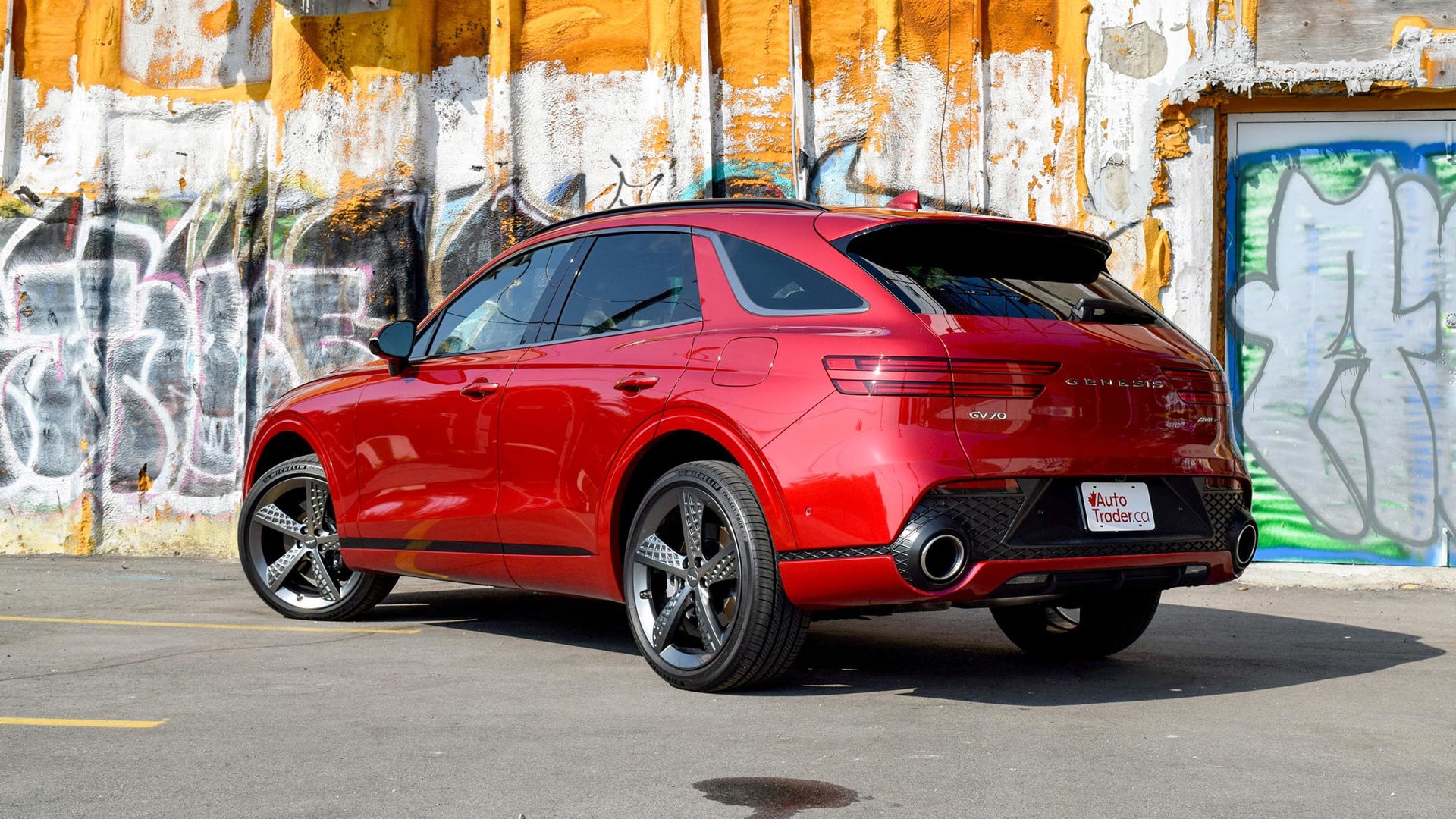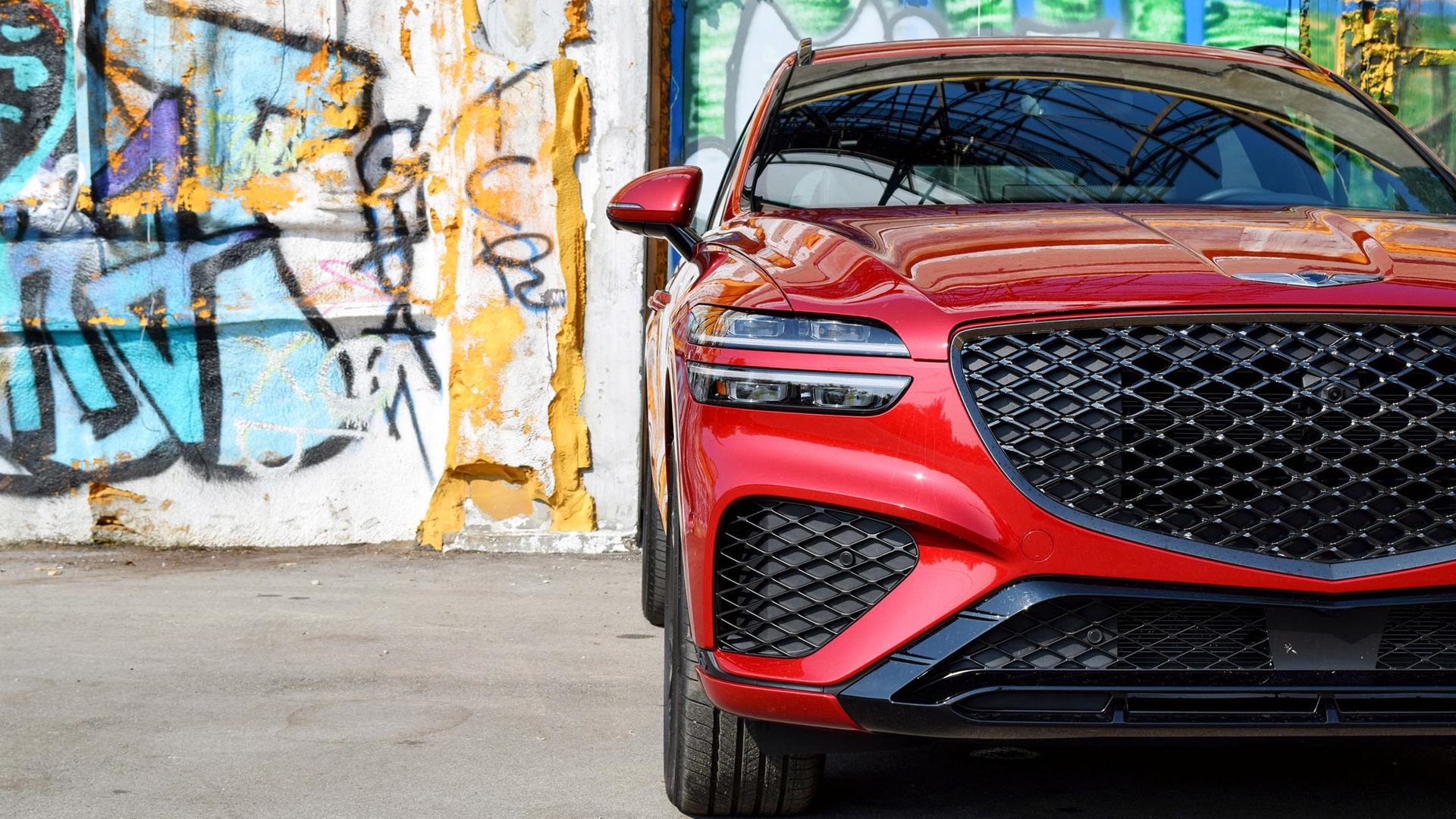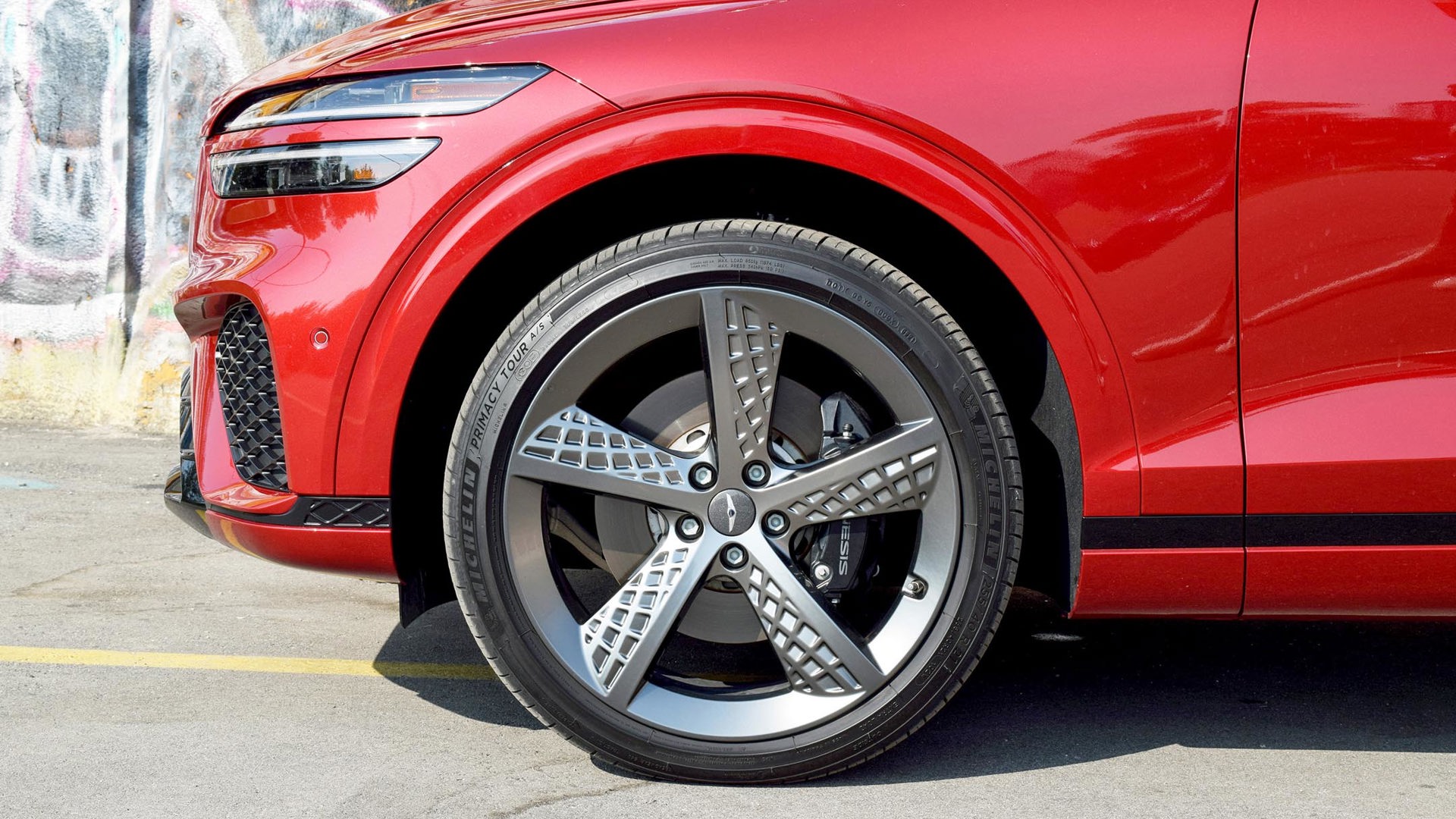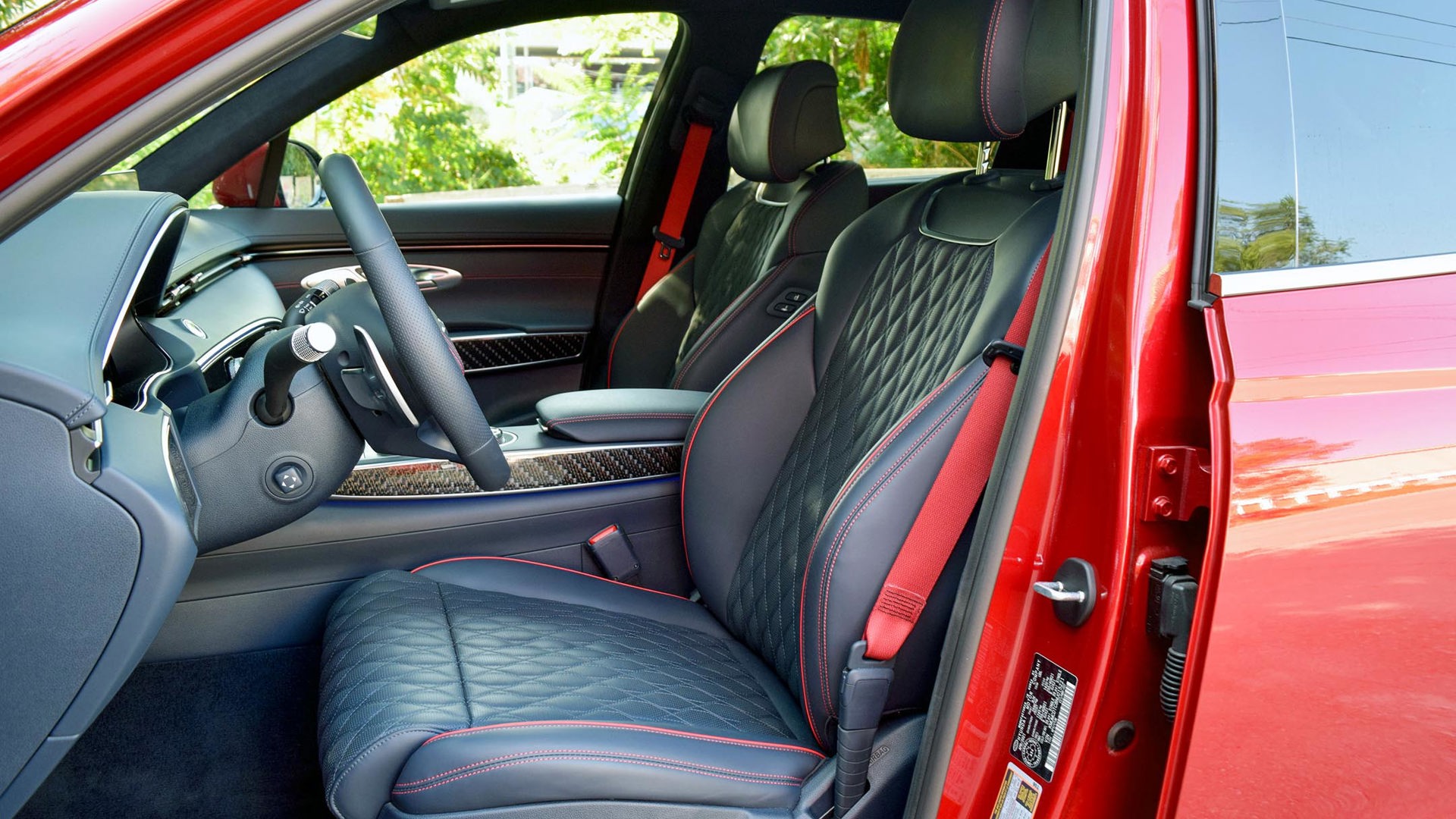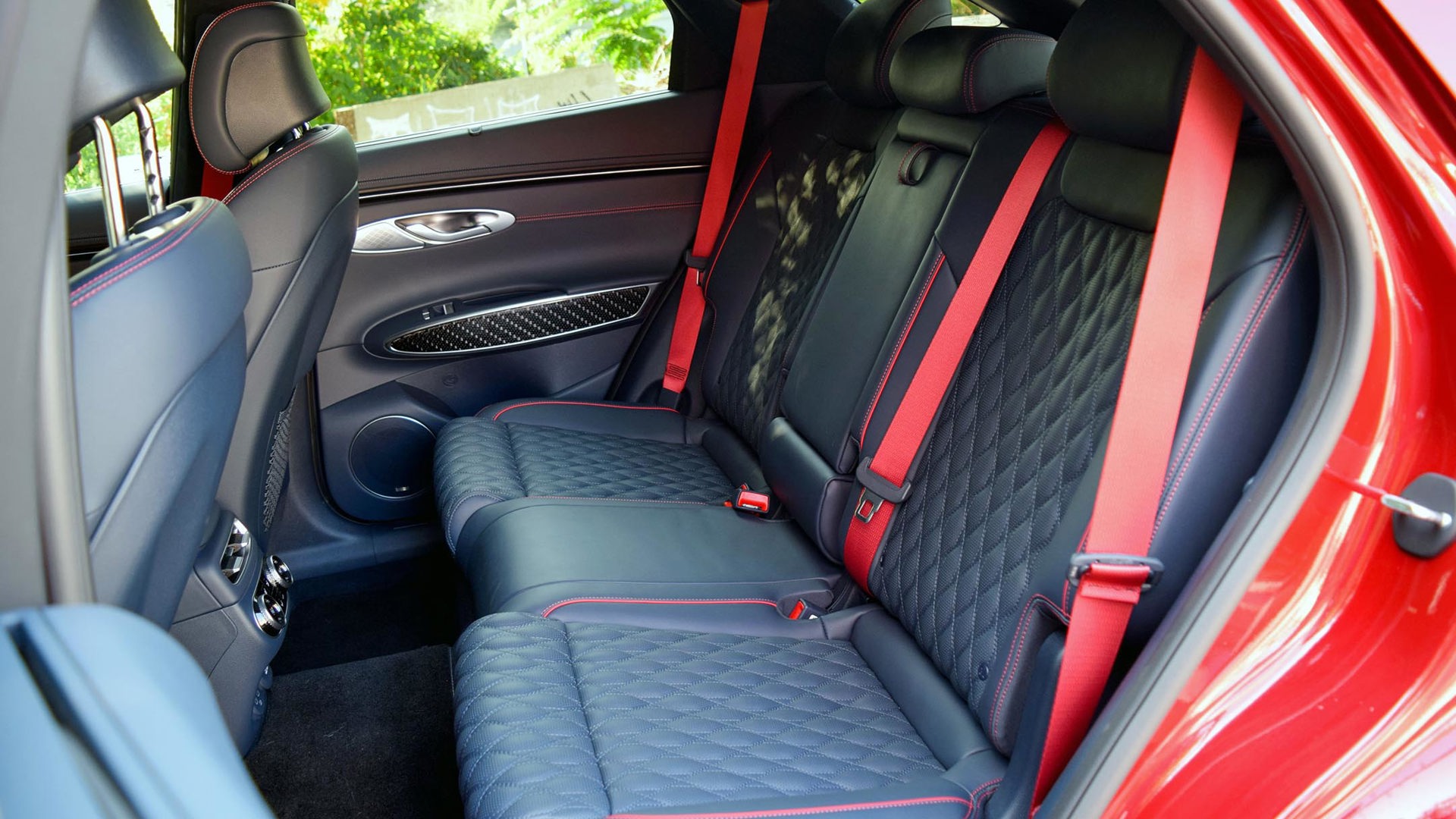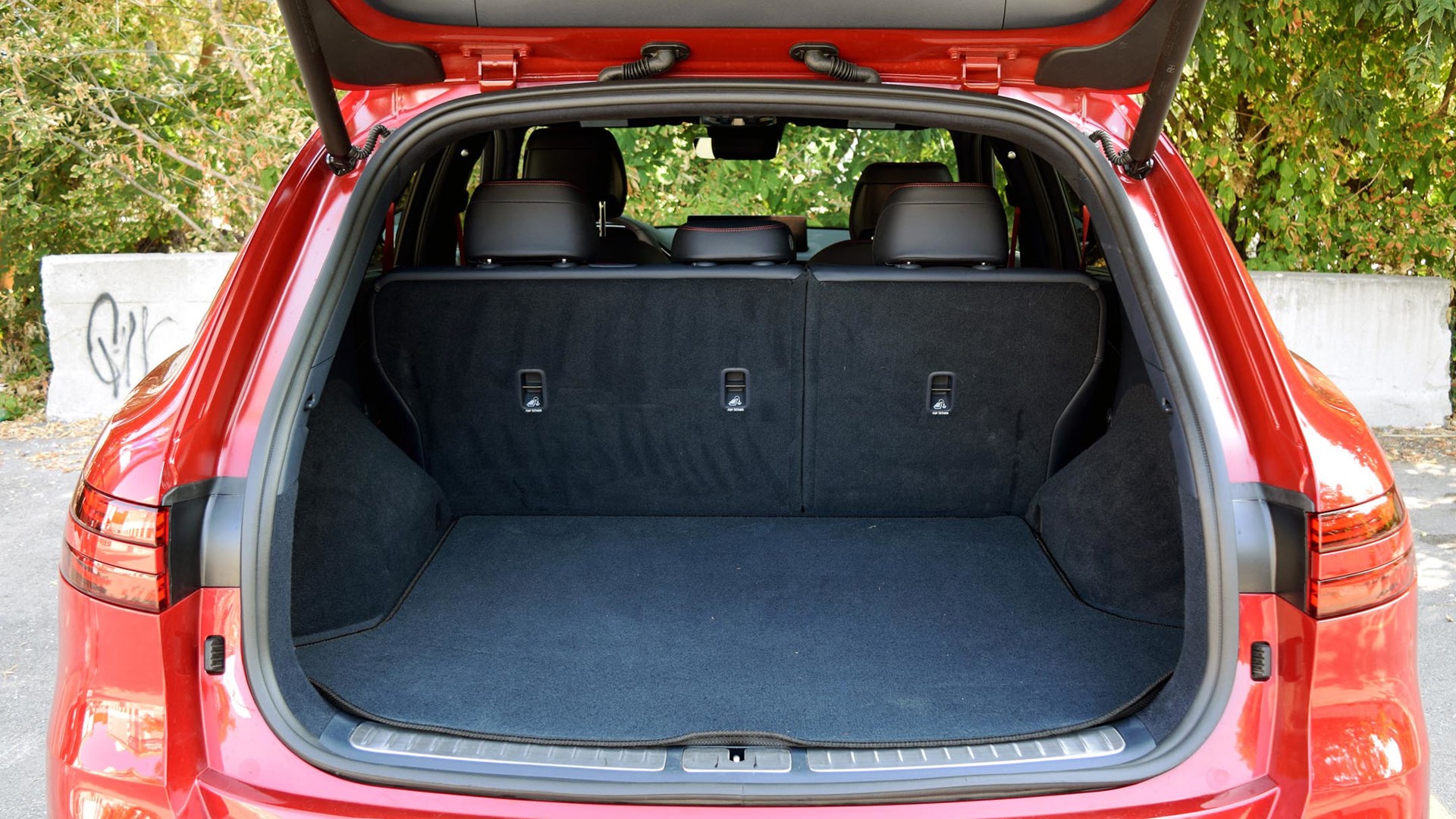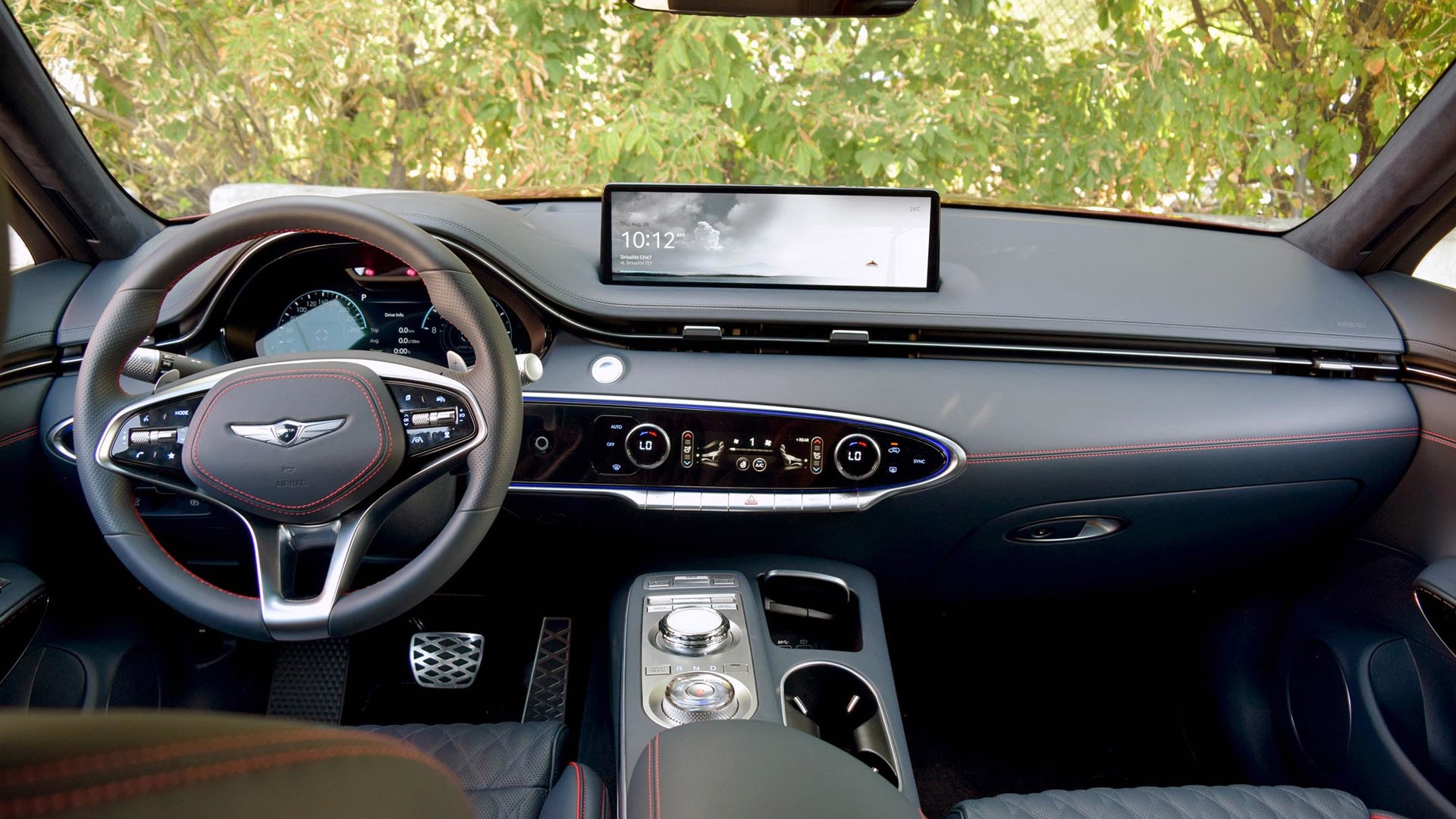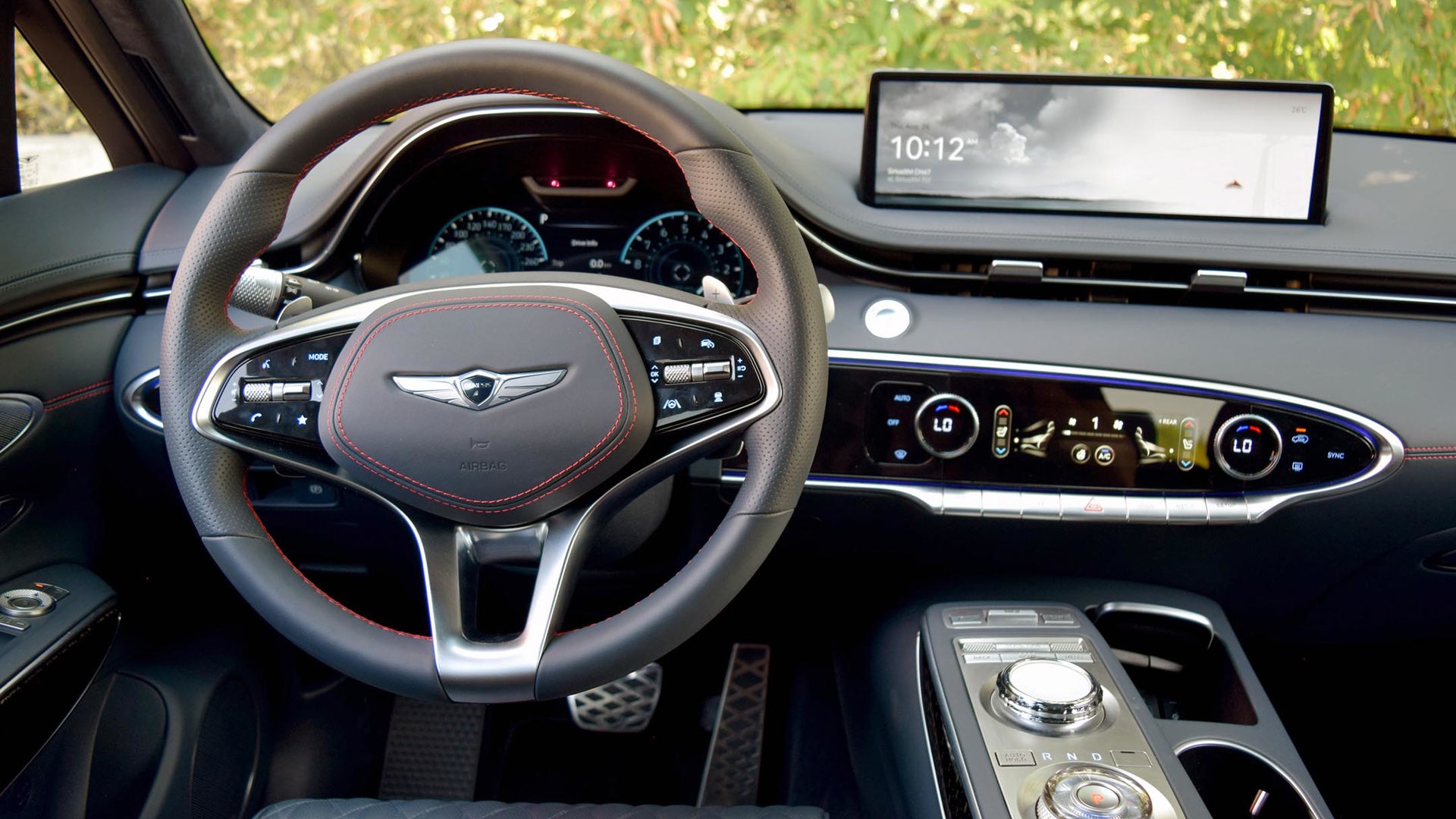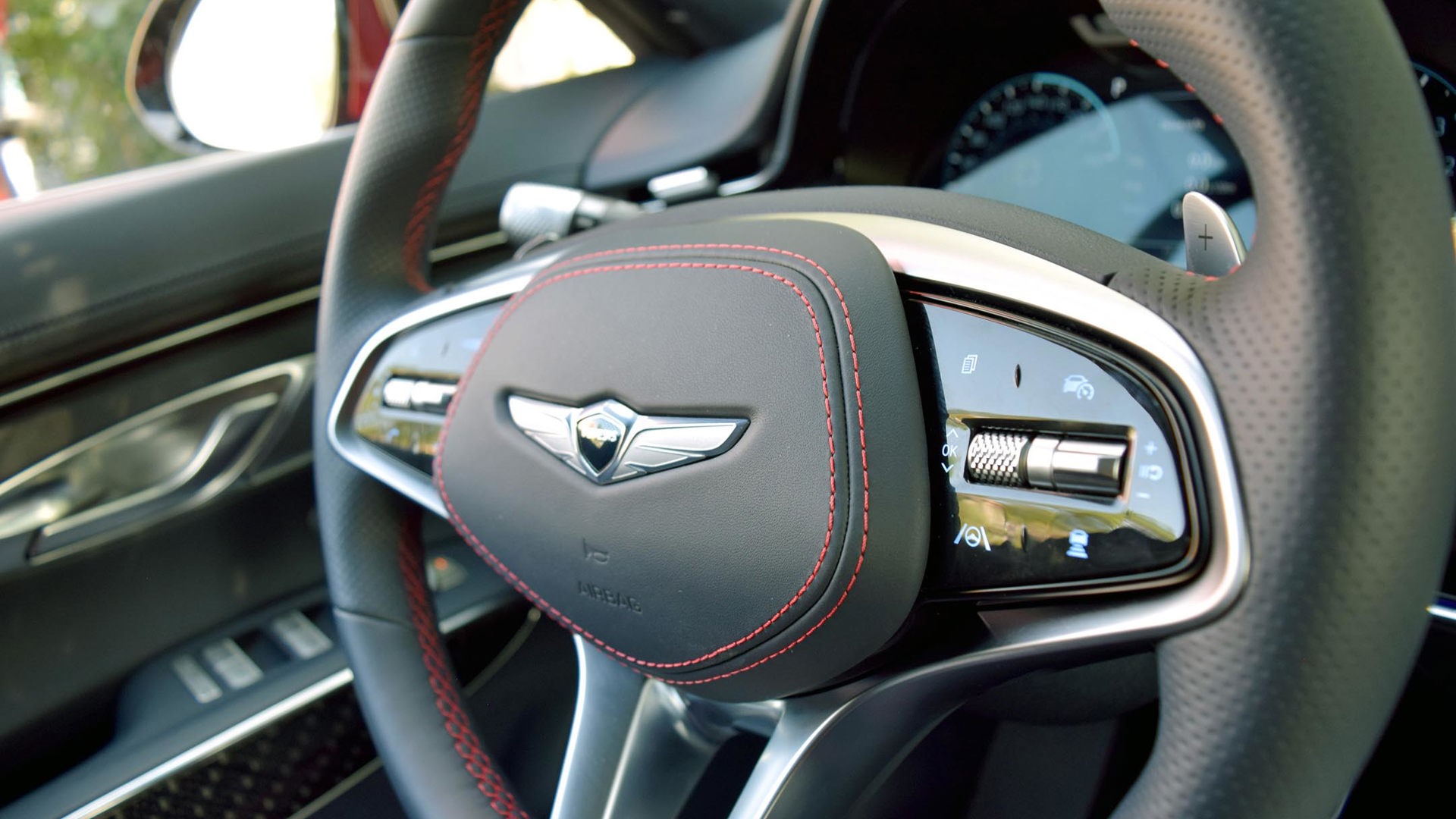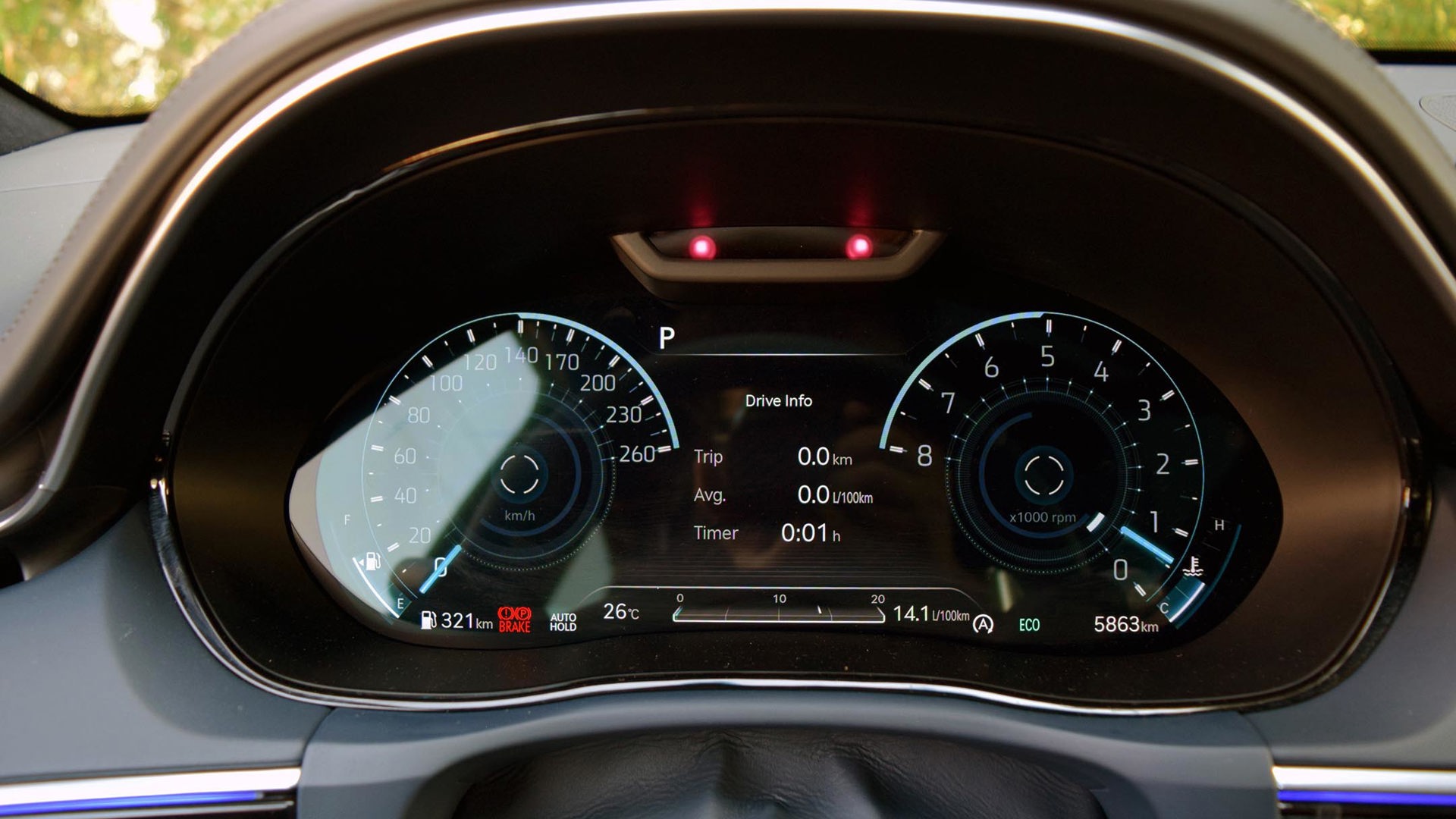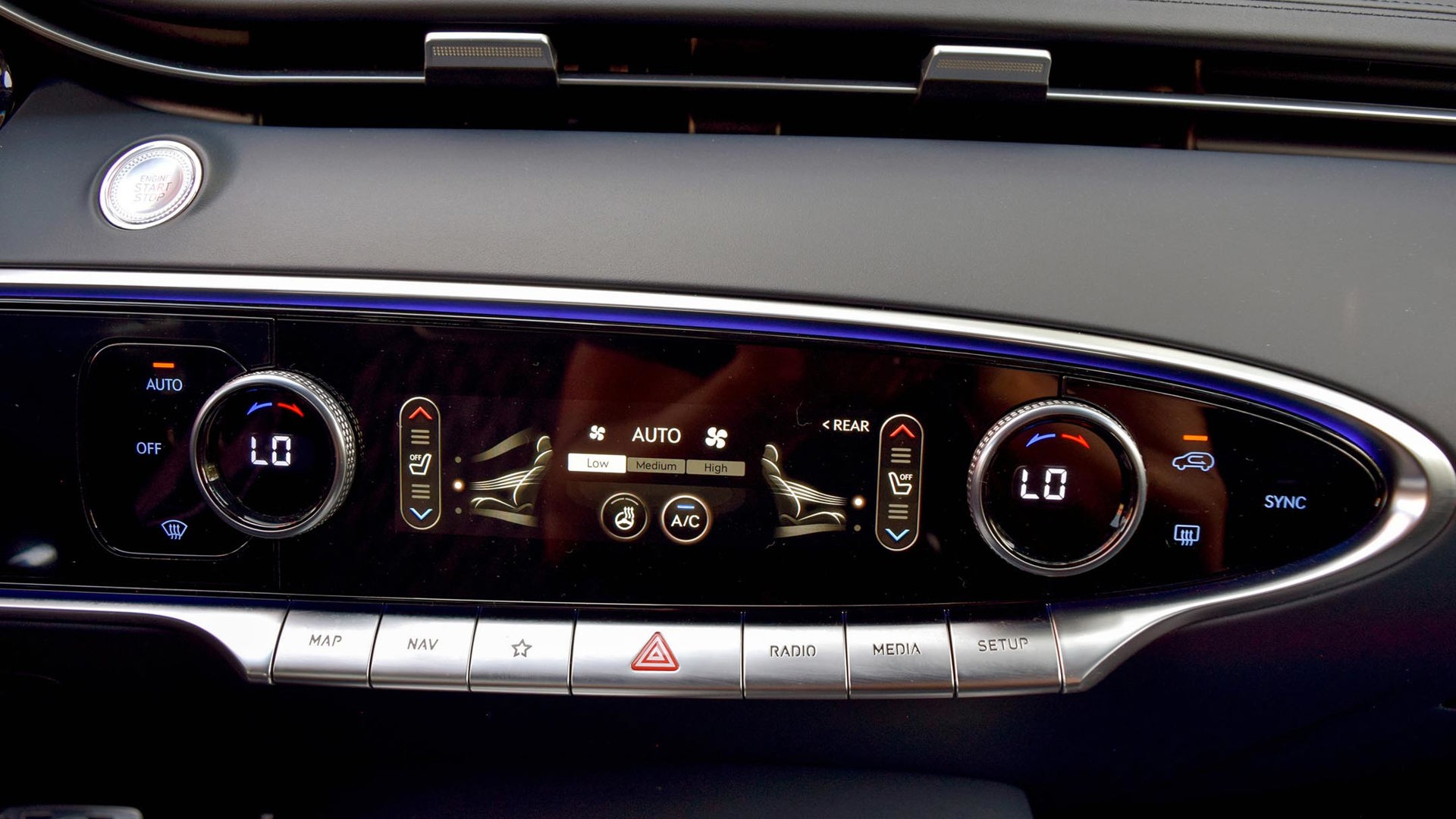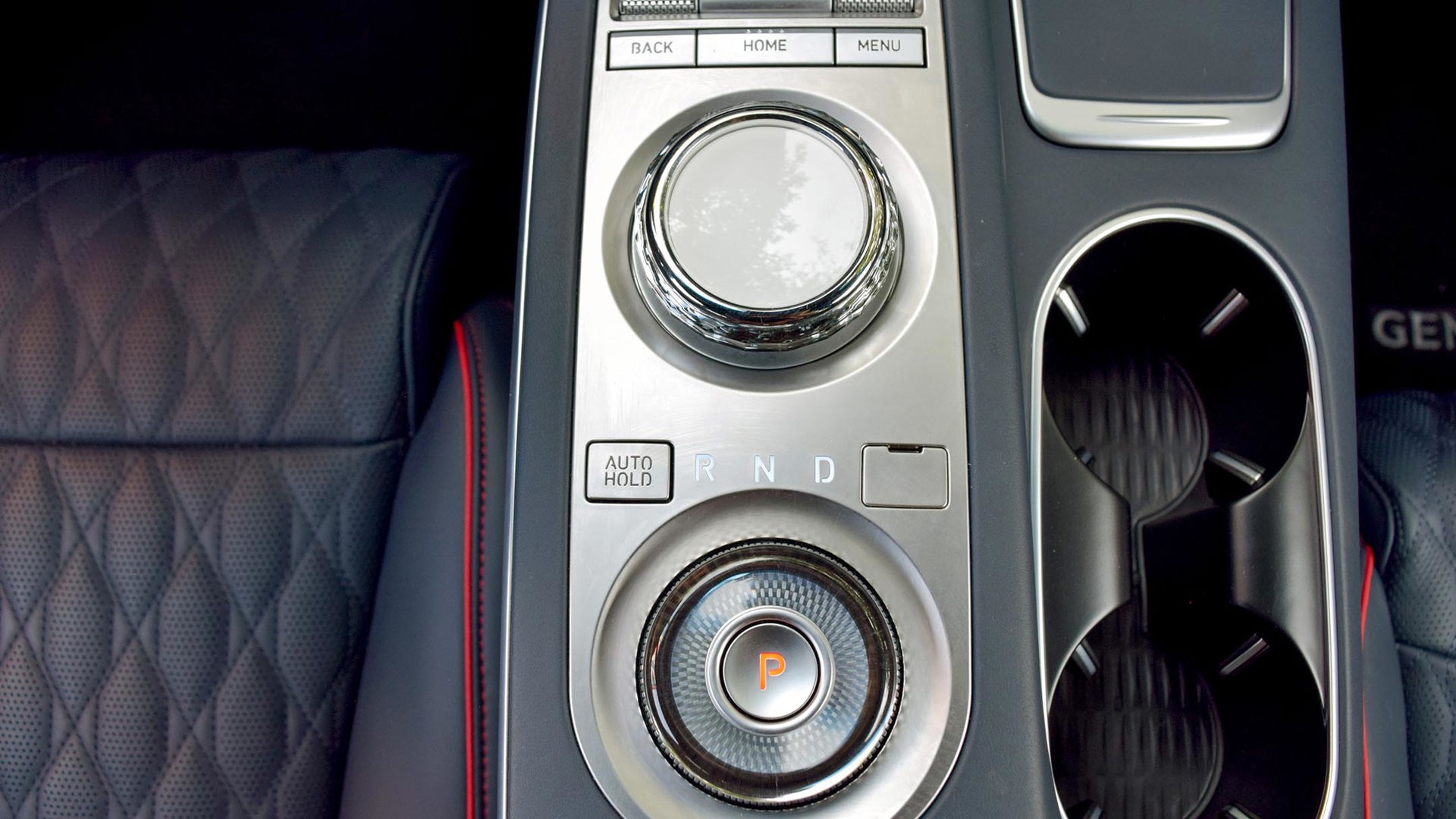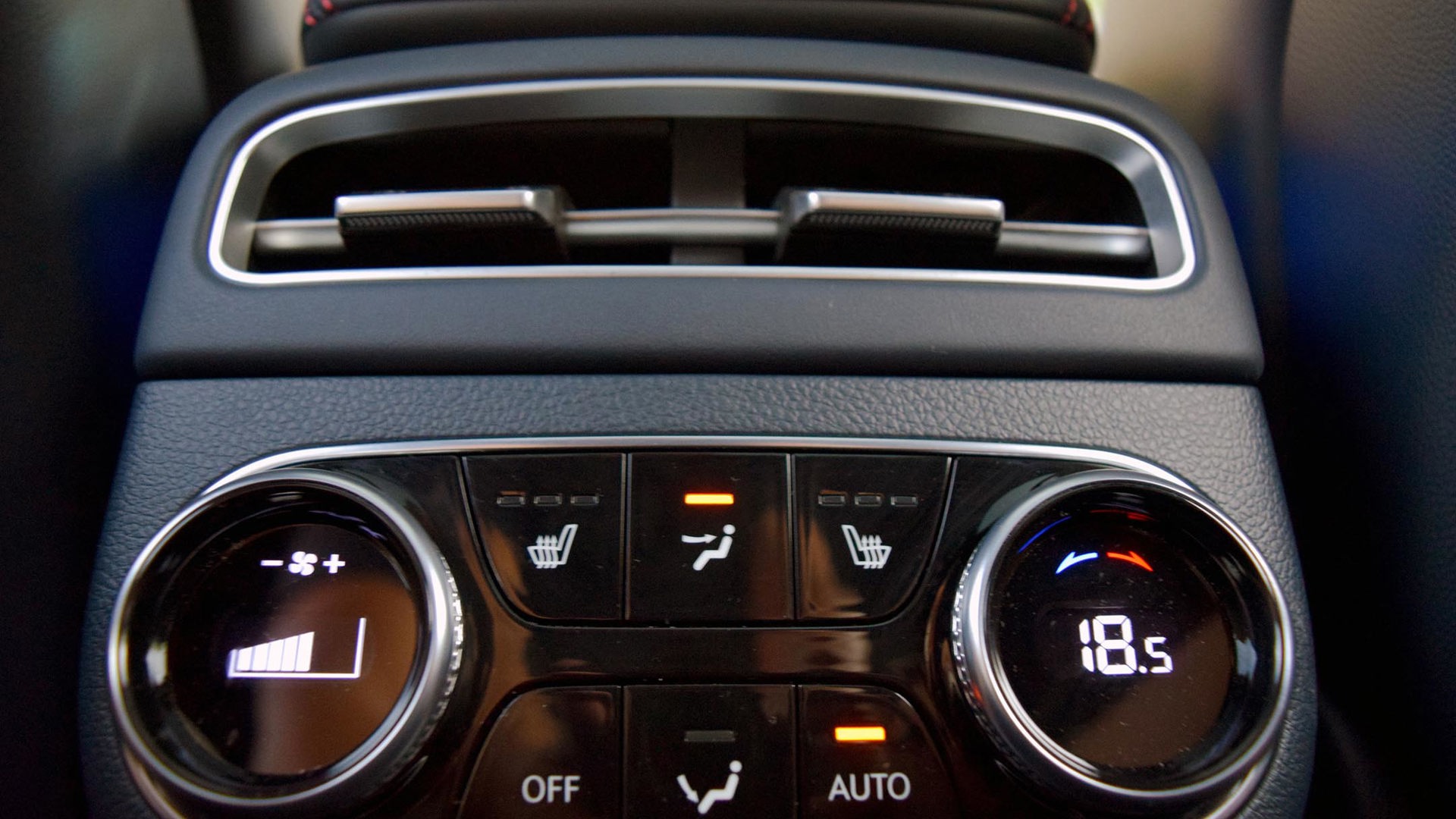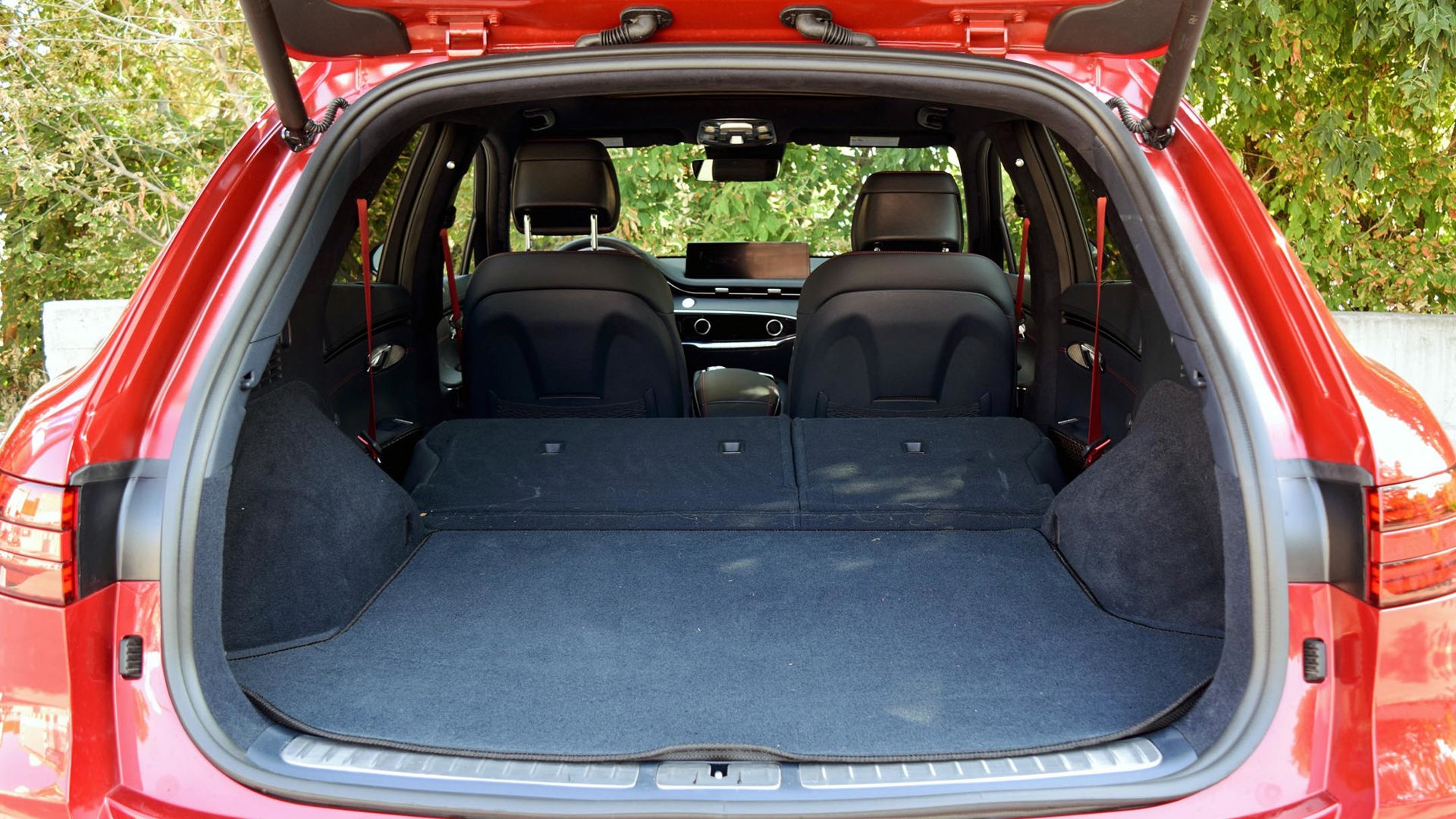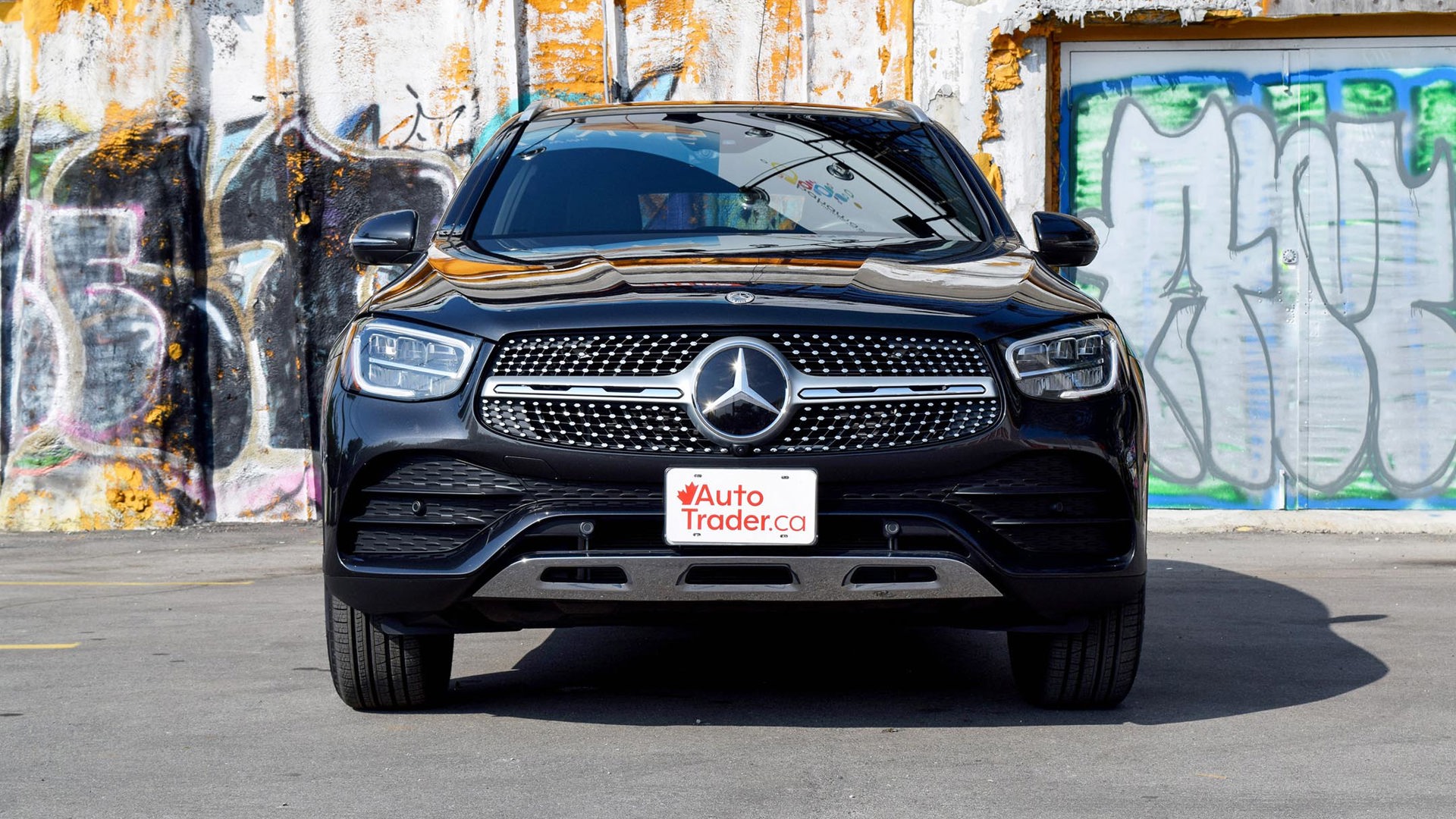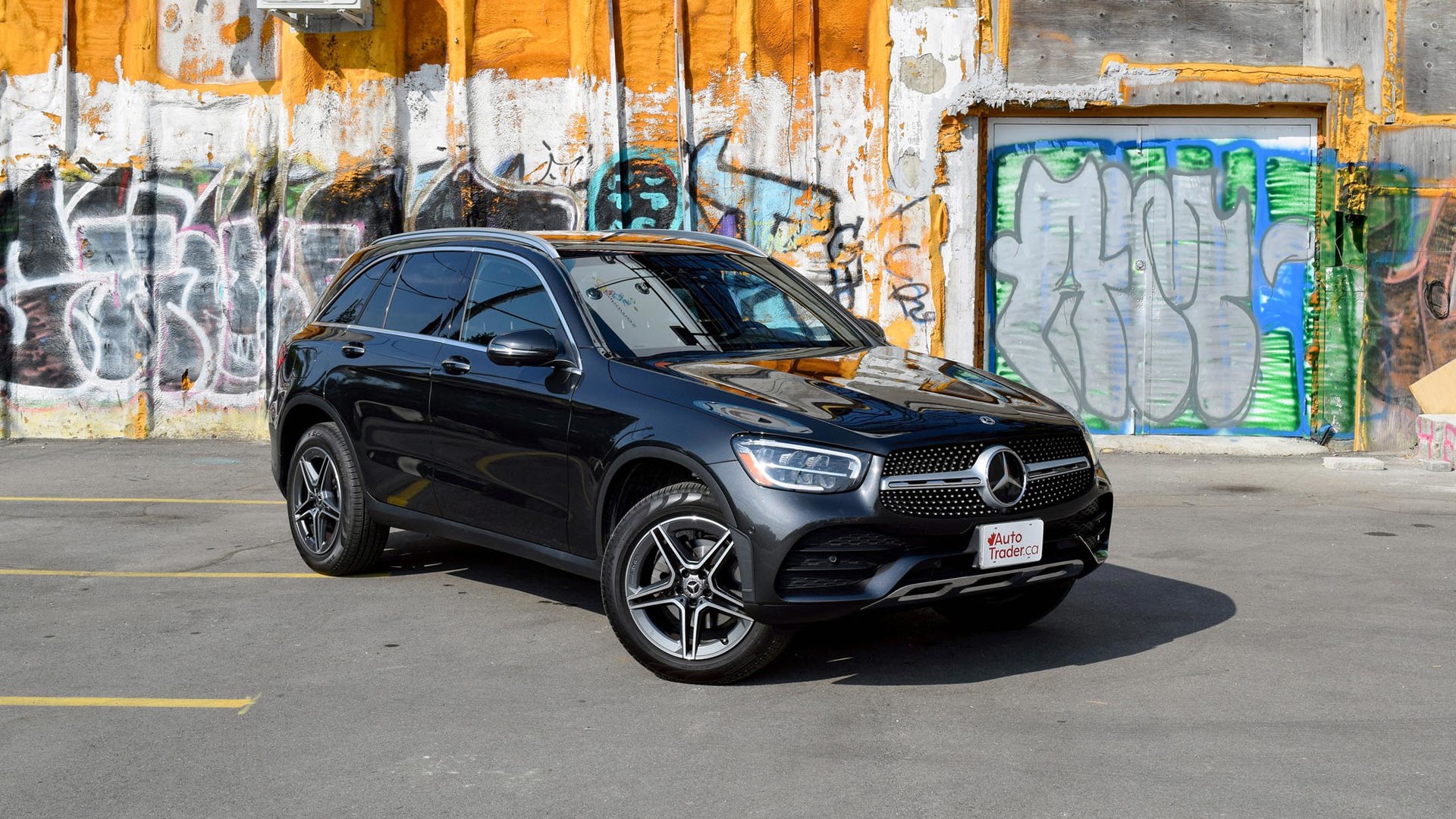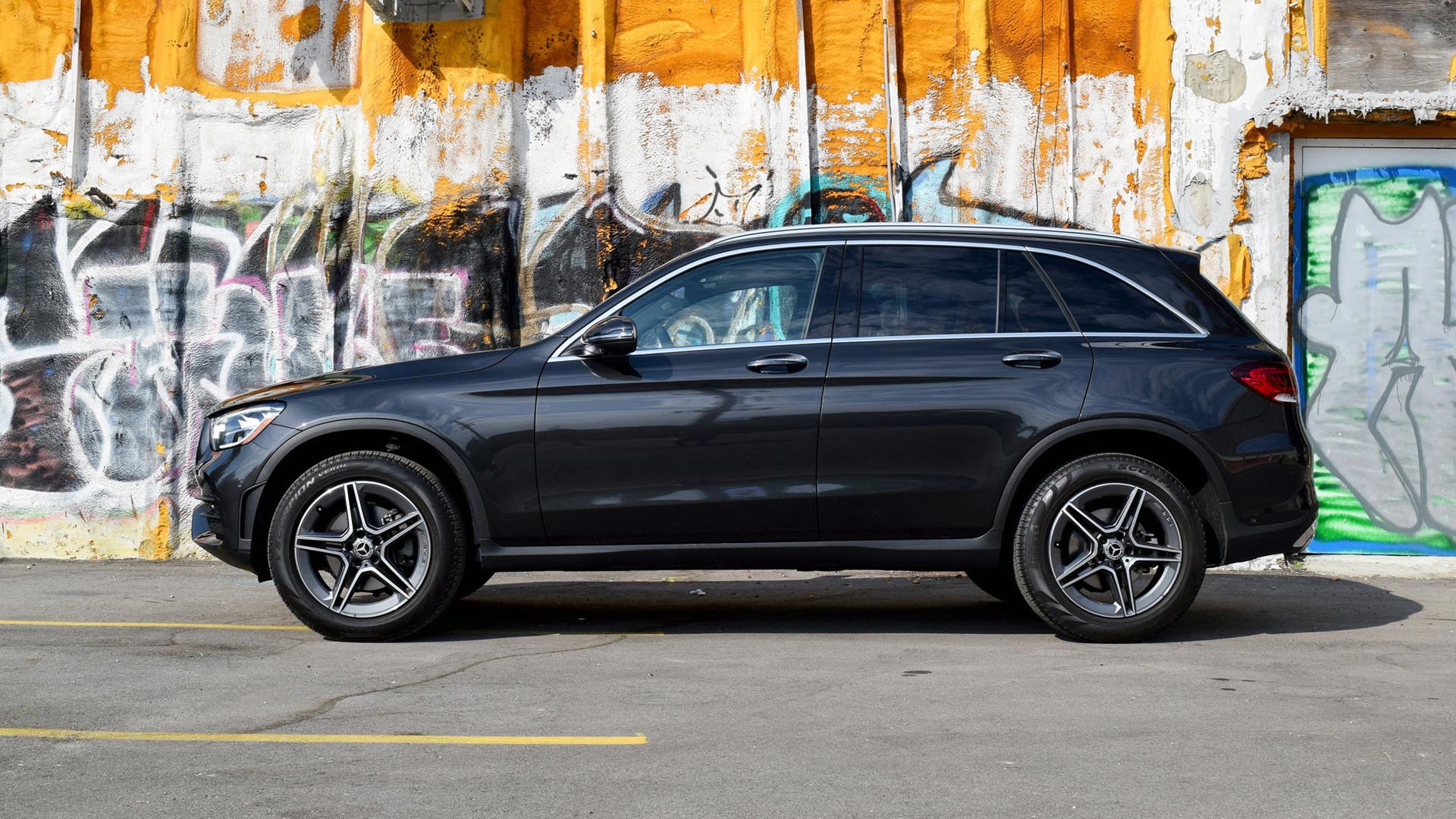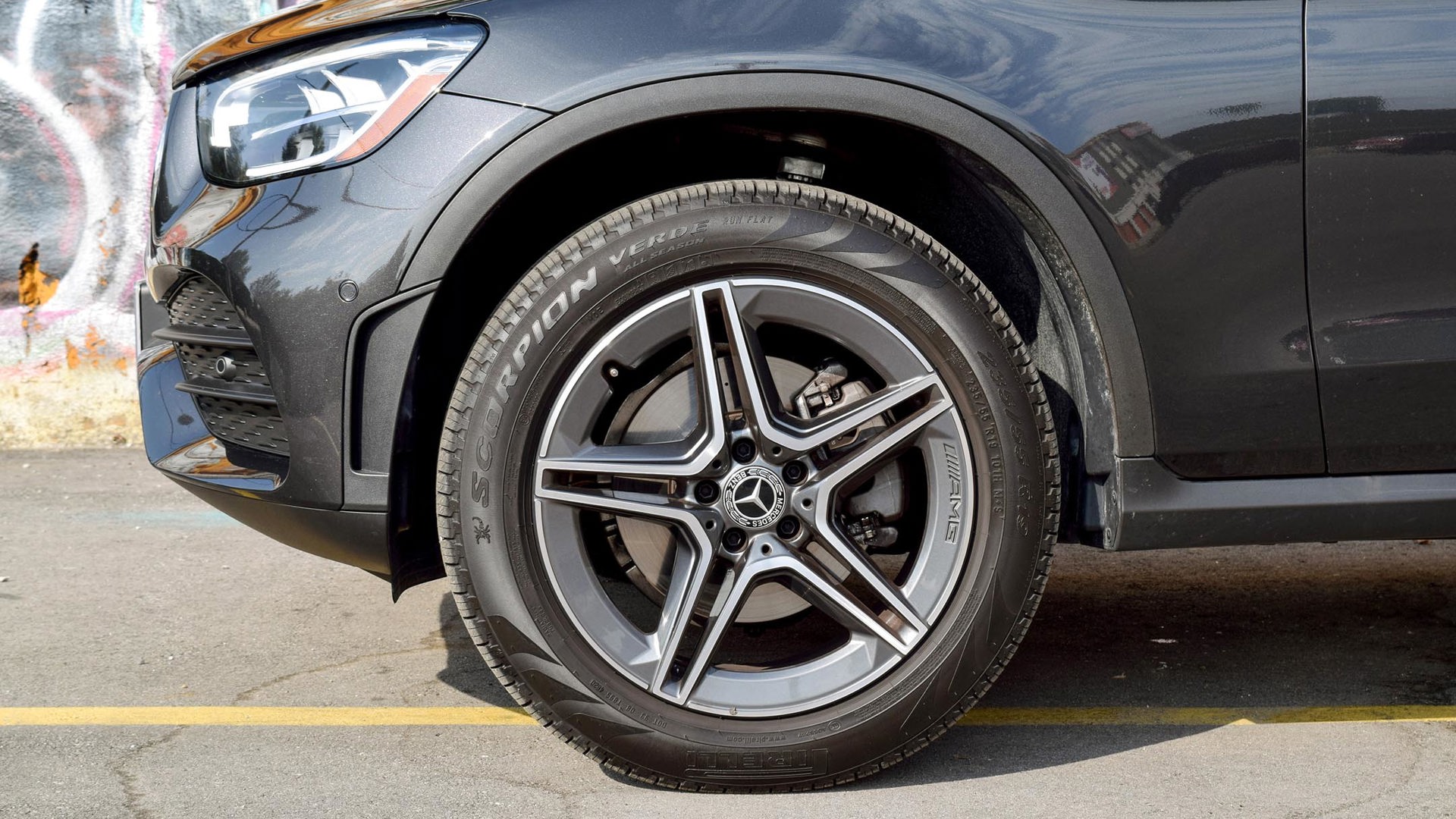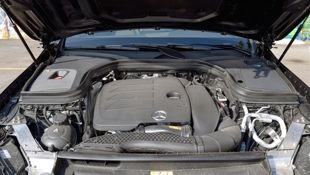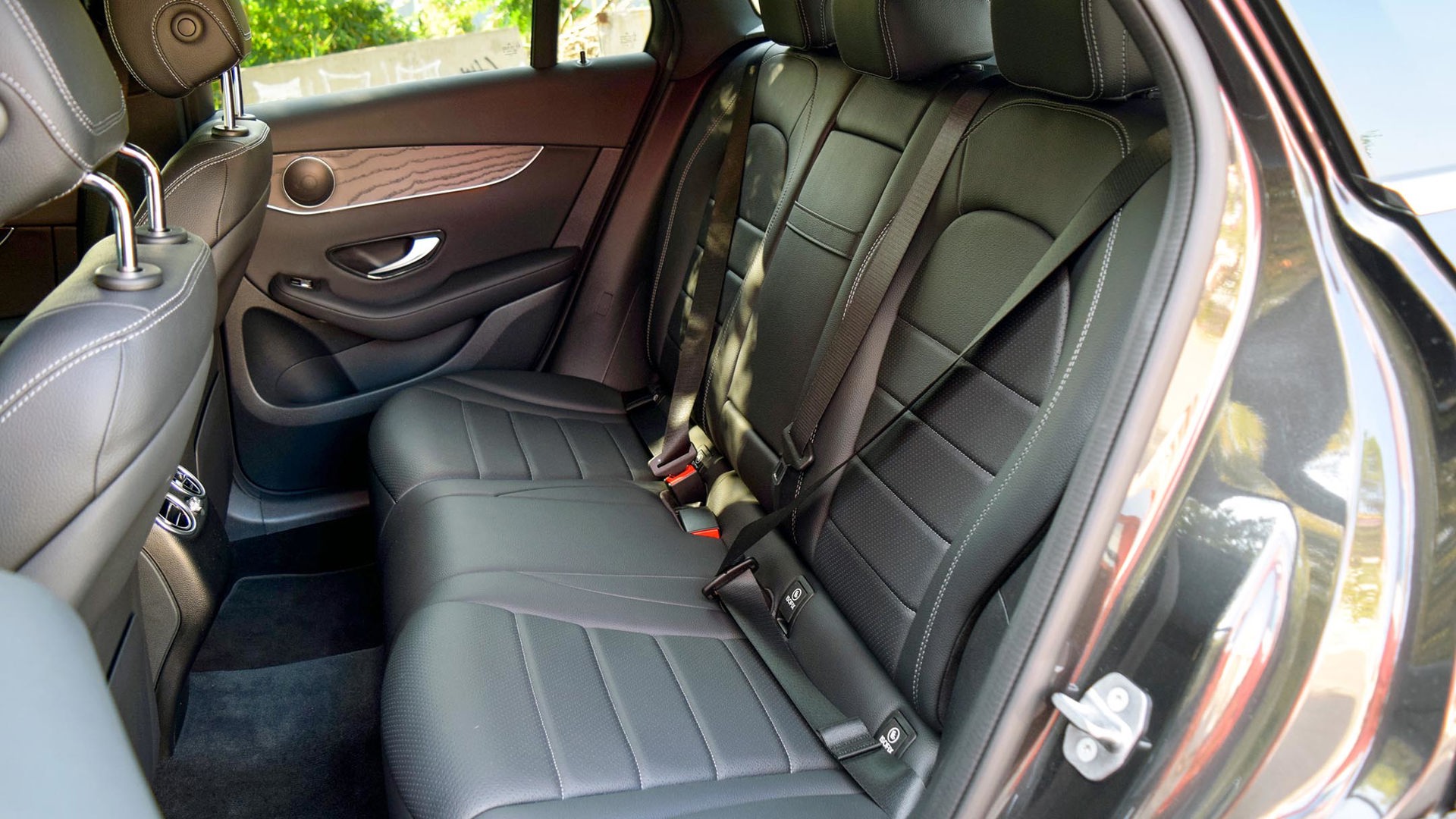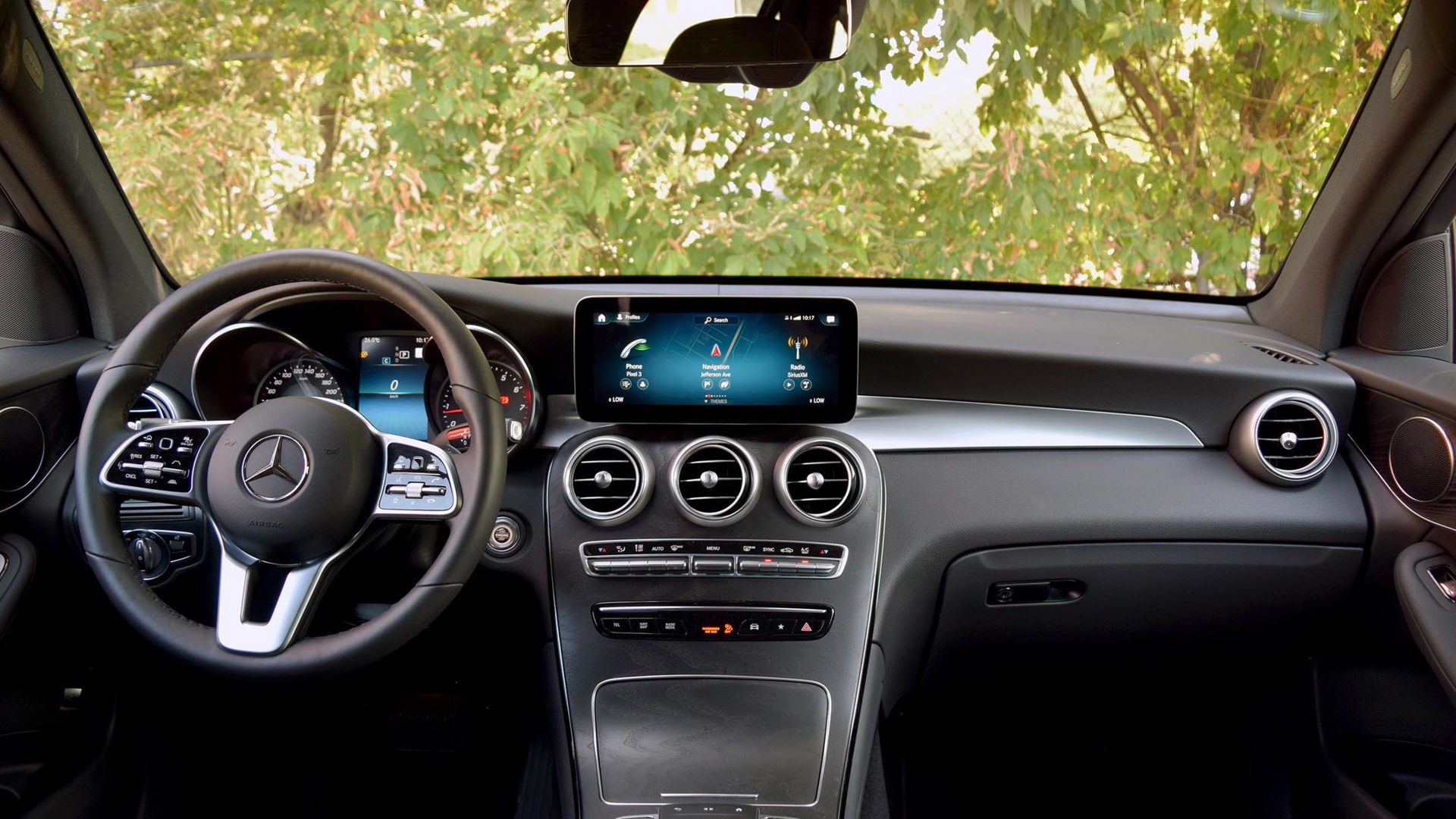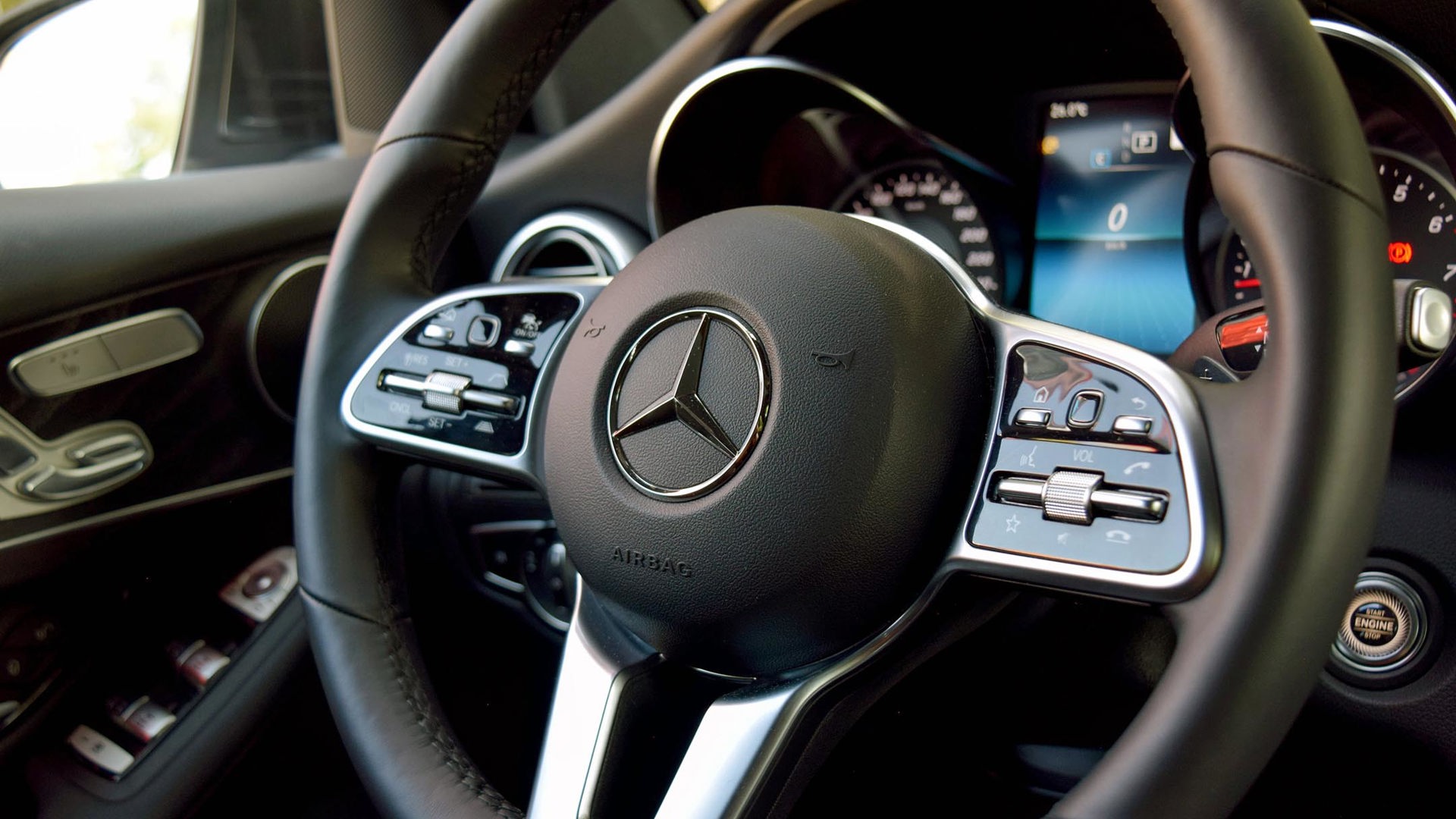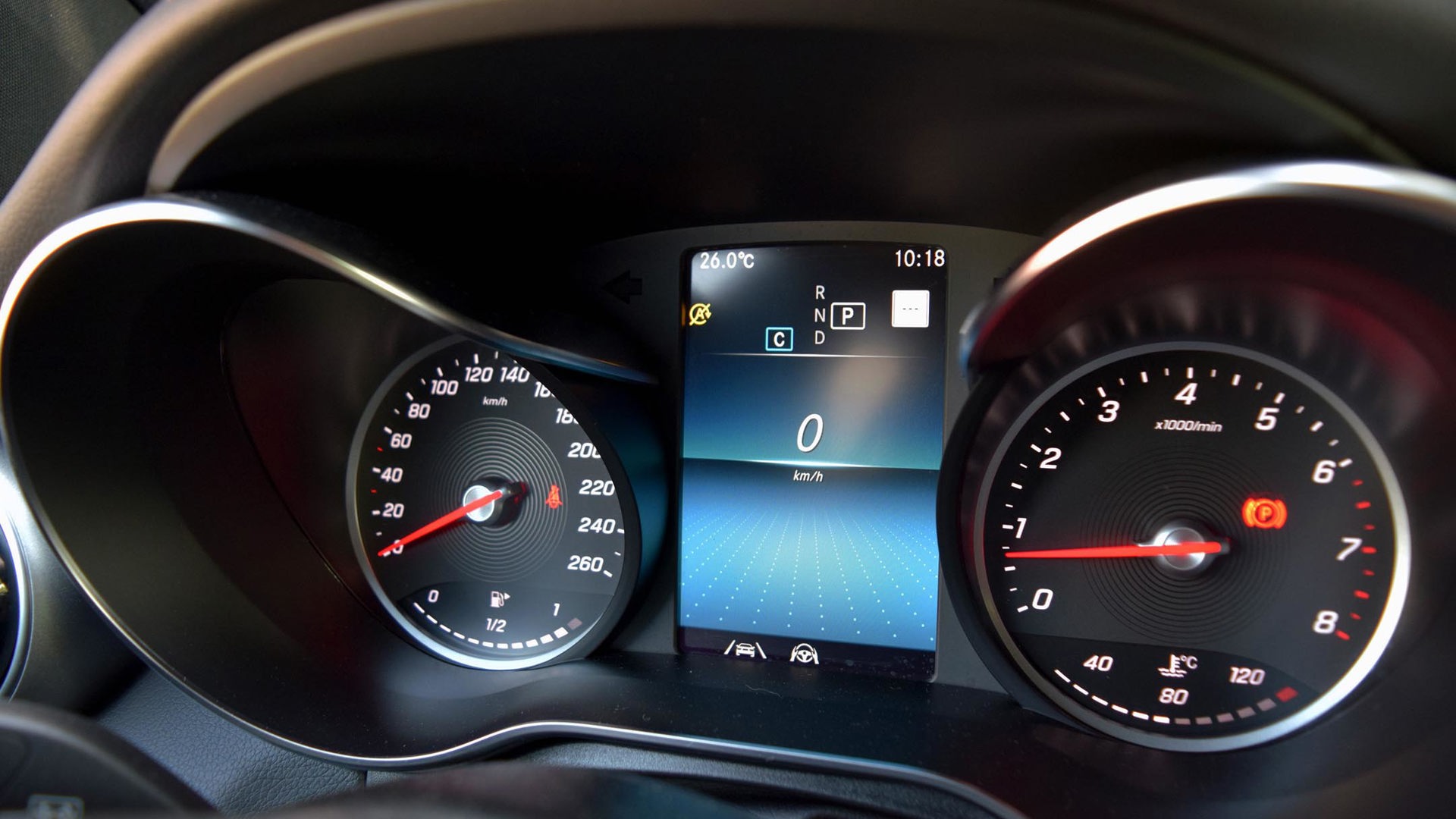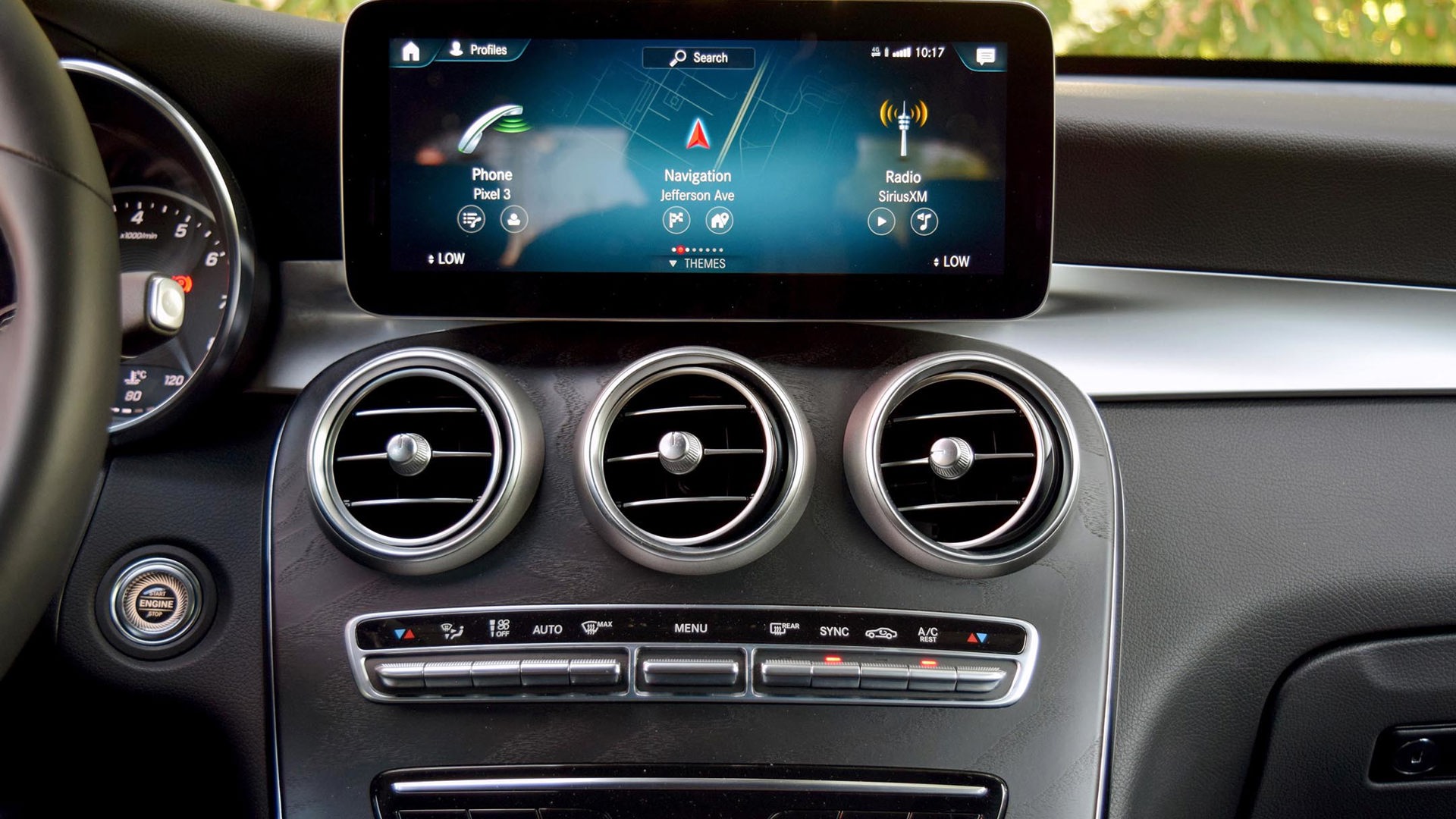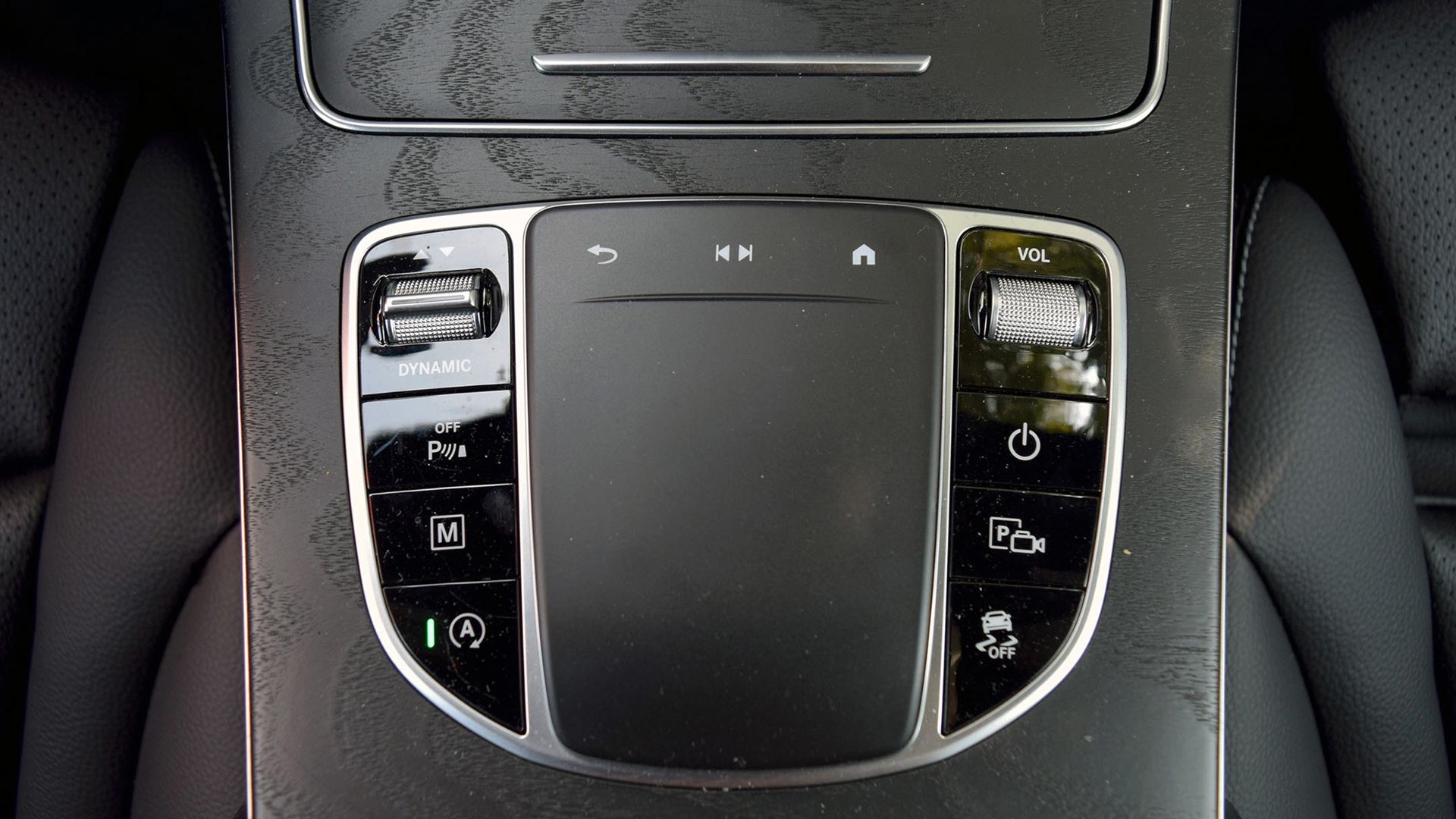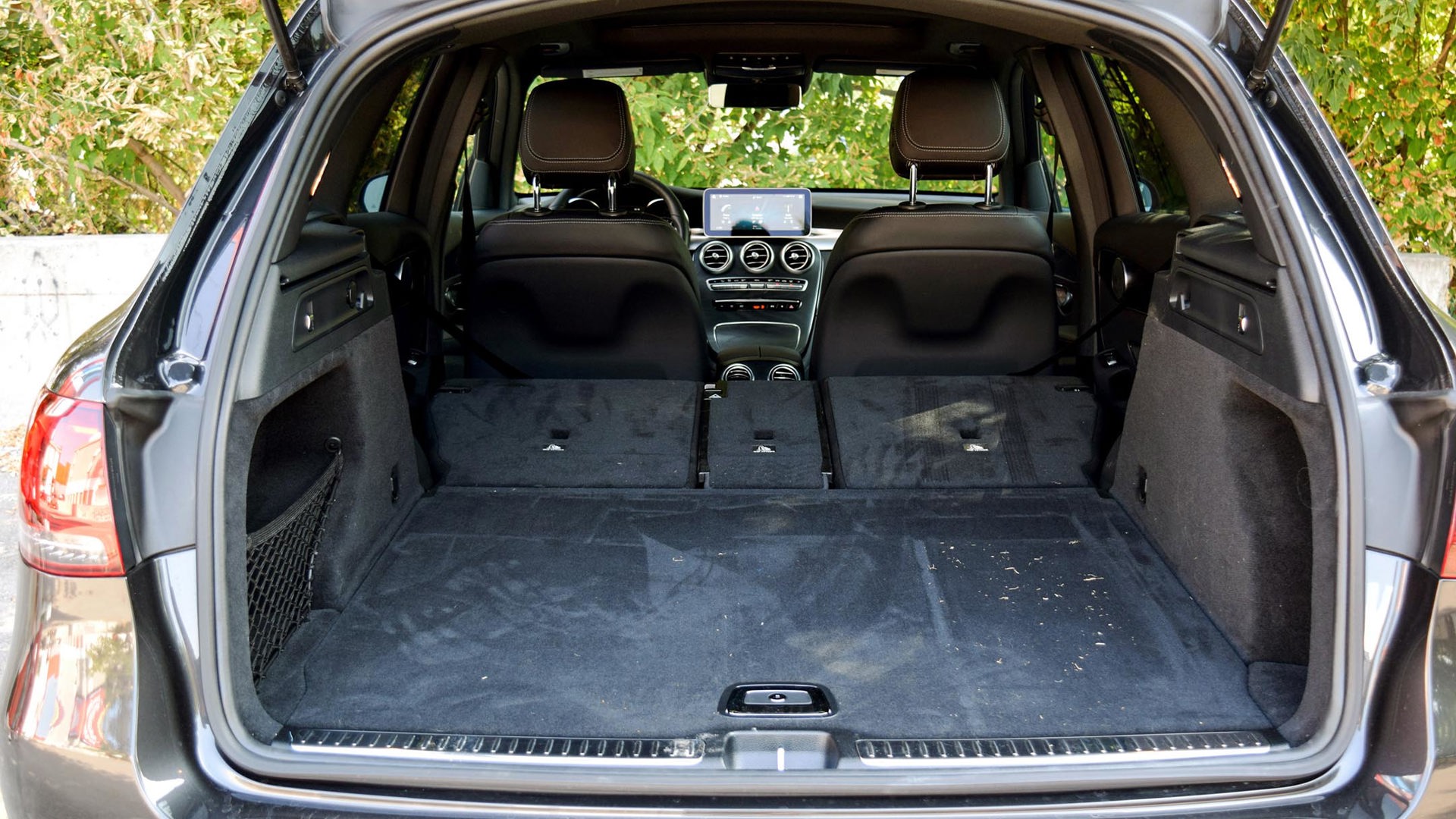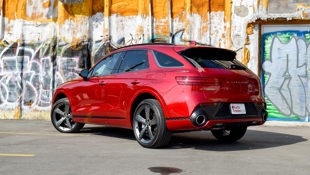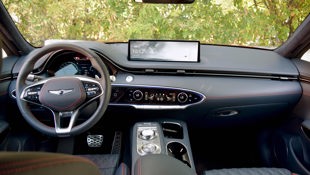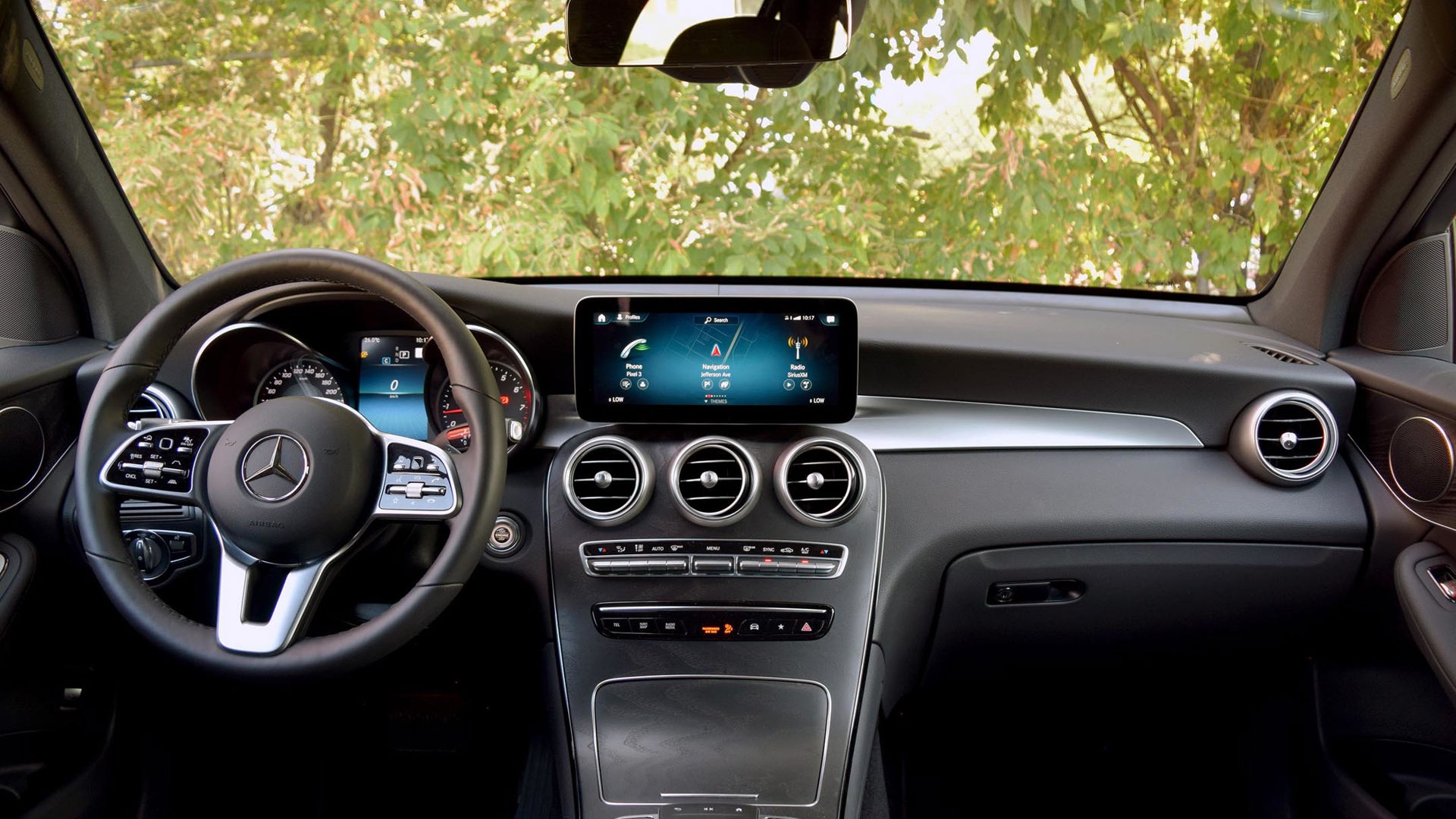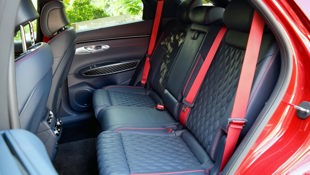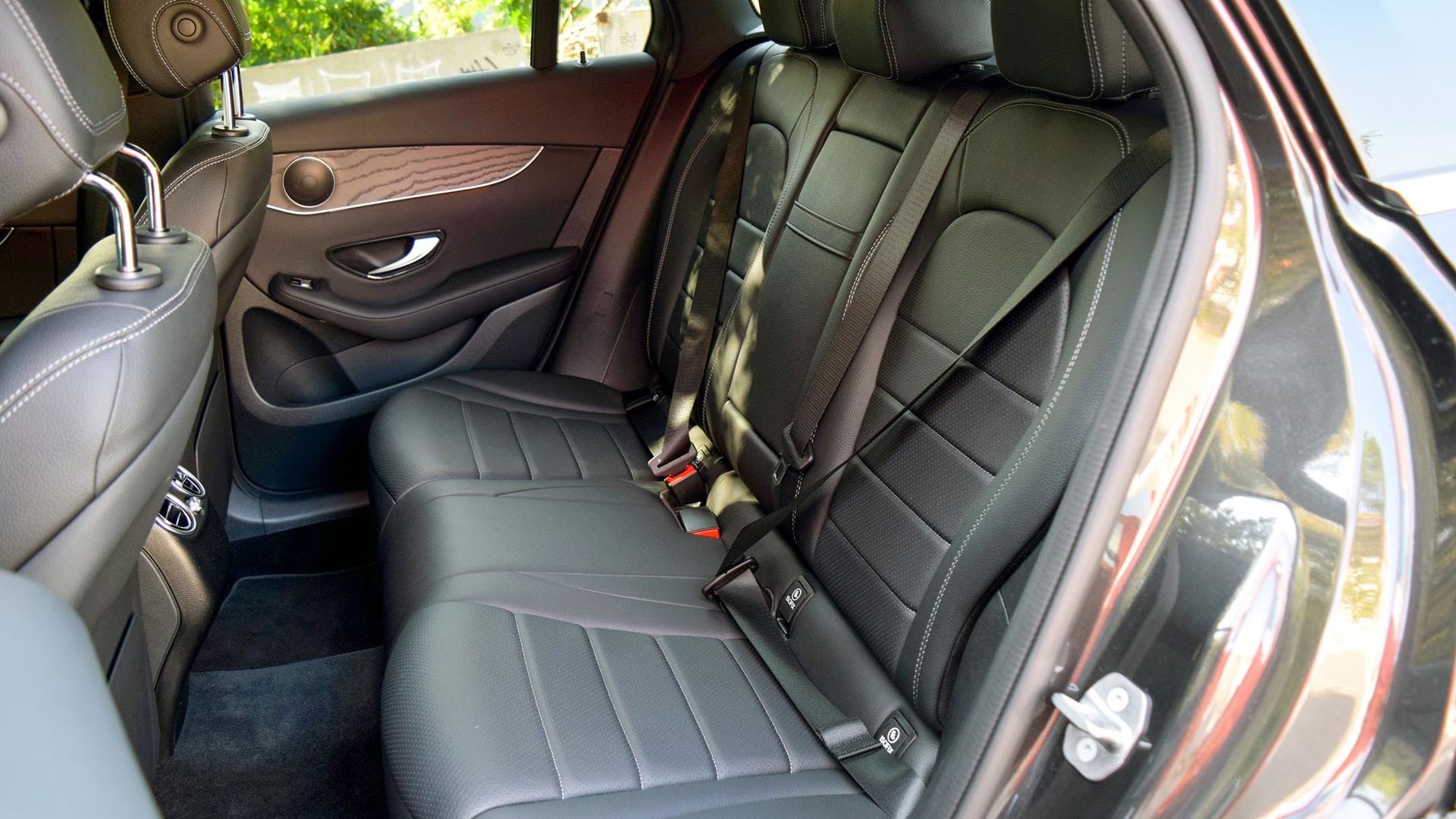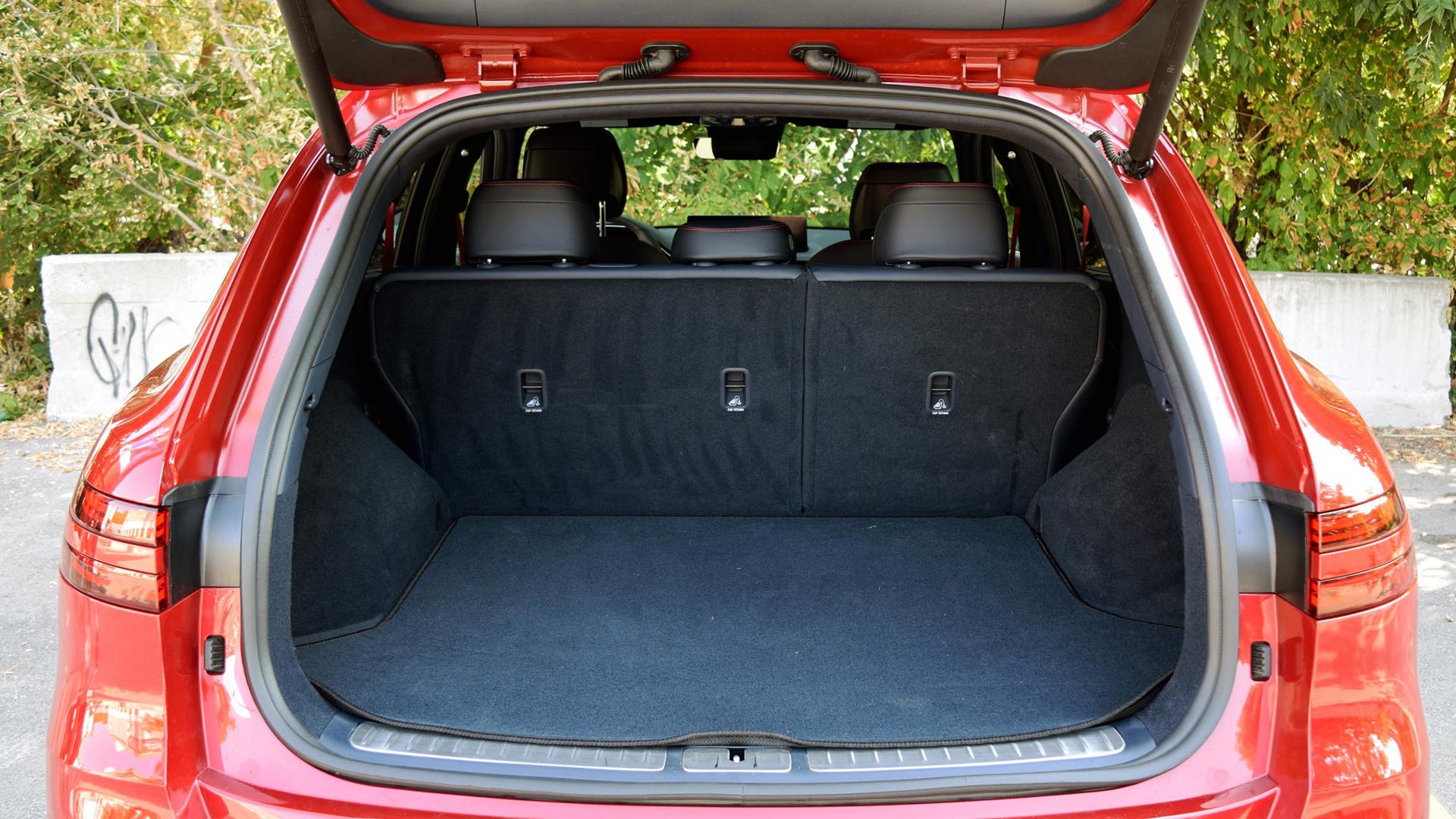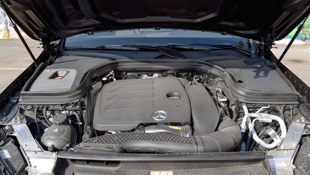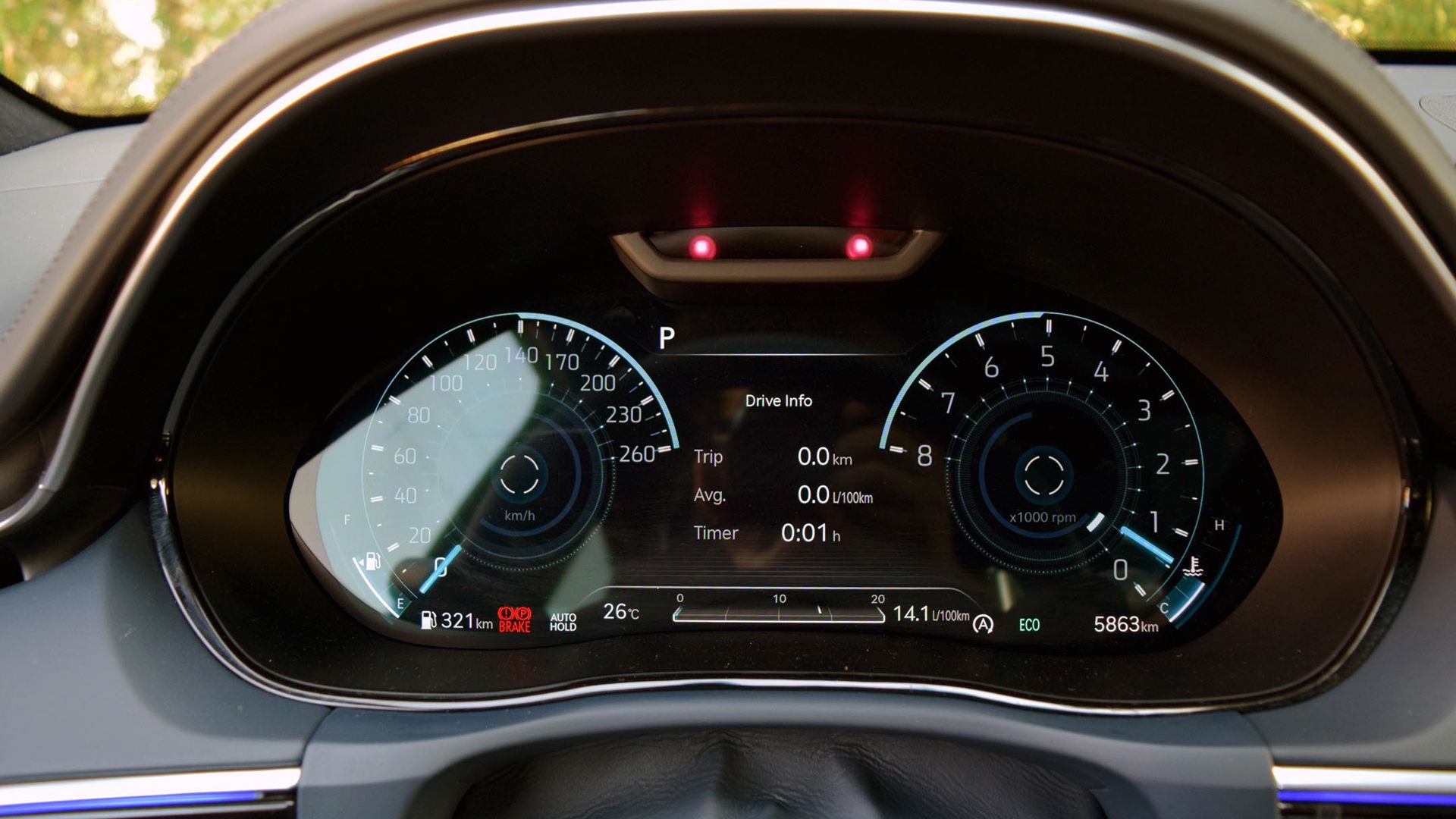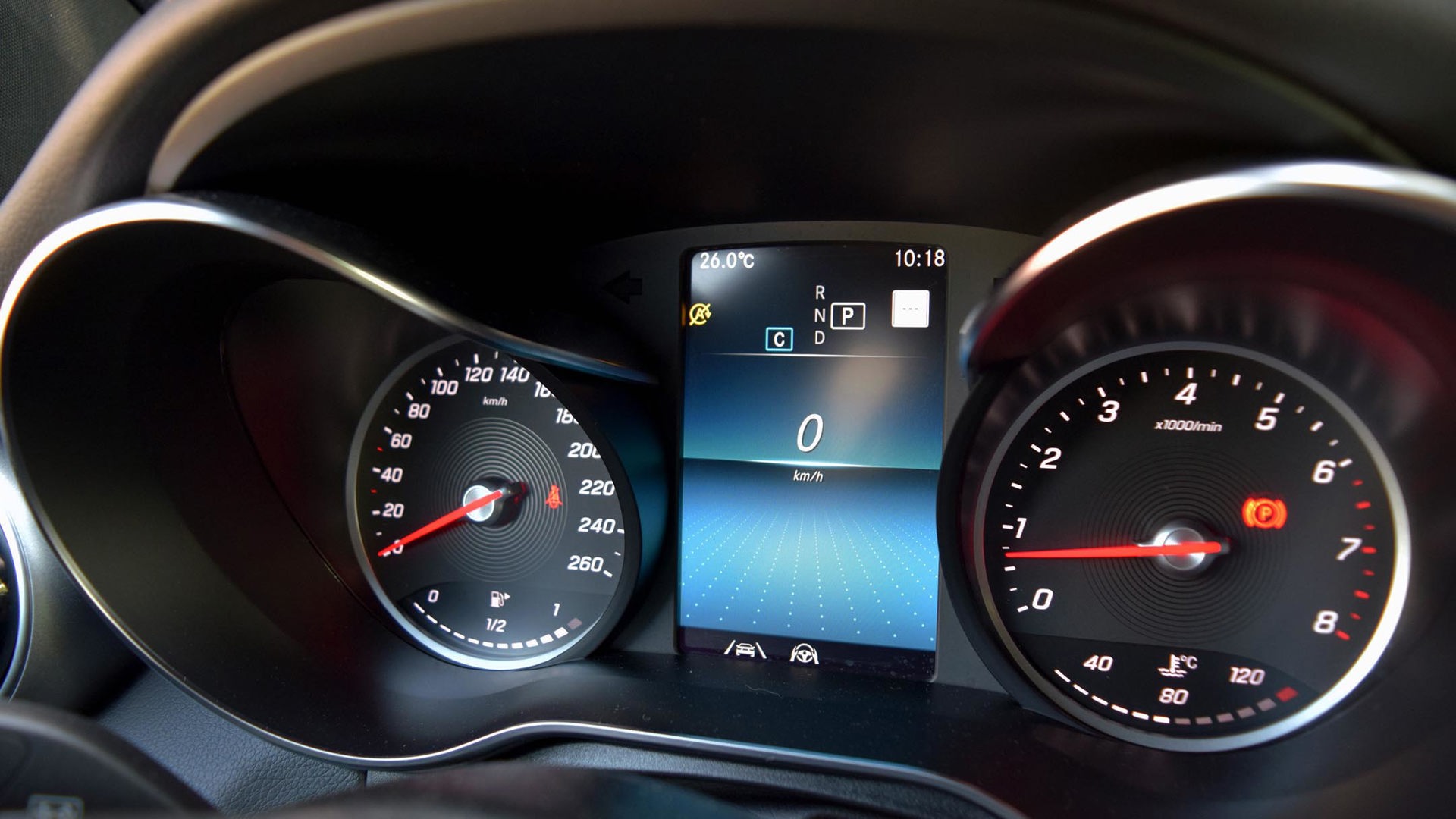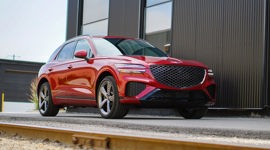Comparison Data
|
2022 Genesis GV70 3.5T Sport Plus
|
2021 Mercedes-Benz GLC 300
|
|---|---|
|
Engine Displacement
3.5T
|
2.0L
|
|
Engine Cylinders
V6
|
I4
|
|
Peak Horsepower
375 hp
|
255 hp
|
|
Peak Torque
391 lb-ft
|
273 lb-ft
|
|
Fuel Economy
12.9 / 10.1 / 11.6 L/100 km cty/hwy/cmb
|
11.3 / 8.5 / 10.0 L/100 km cty/hwy/cmb
|
|
Cargo Space
819 / 1,610 L seats down
|
550 / 1,600 L seats down
|
|
Base Price
$75,500
|
$49,900
|
|
A/C Tax
$100
|
$100
|
|
Destination Fee
Included
|
Varies
|
|
Price as Tested
$75,600
|
$60,800
|
|
Optional Equipment
None
|
$10,800 – Sport Package, $1,500; Premium Package, $4,500; Premium Plus Package, $2,100; Intelligent Drive Package, $2,700
|
Mercedes-Benz is a name synonymous with the world of luxury cars.
After decades of success and recognition, it’s no wonder the German automaker presents a bullseye at which the industry’s up-and-comers take aim. Case in point: Hyundai’s spinoff Genesis brand, which has delivered nothing but impressive vehicles since its introduction some six years ago.
Its sedans are good, but they’ve largely fallen out of favour with buyers. So the brand started building SUVs. First came the GV80, which we fell in love with. And now we’re falling for its smaller sibling, the 2022 Genesis GV70.
To see how it stacks up against the segment’s best, we lined it up alongside the 2021 Mercedes-Benz GLC-Class.
Styling
An inoffensive design language has helped Mercedes immensely over the years, but now its offerings are starting to feel anonymous – hardly ideal in today’s premium market. Performance-tuned AMG versions of the GLC-Class appear a bit more aggressive but they still look a bit stale these days, which is in stark contrast with the GV70.
The Genesis may stand out simply because it sports a fresh look, but it’s inspired by others around the industry. There are hints of the Alfa Romeo Stelvio around the rear, including with the integrated exhaust exits, while the side profile pulls in a bit of an SUV coupe-like silhouette thanks to a generous lean on the C-pillar. However, the GV70 makes the strongest impression with its front end: the shield-shaped grille and slim LED headlights make for a sharp ensemble that will turn heads for at least a few years to come.
Open the doors of these SUVs, and the contrast is obvious. The cabin of the GLC-Class plays it safe, while the GV70 exudes a wow factor. There are big screens throughout the interior of the GV70, and all the switchgear feels substantial. It feels like every aspect of the interior in the Genesis has been combed over by a design team that was looking to add something special everywhere it could. The Mercedes lacks this attention to detail. It feels sterile and lifeless in comparison.
Genesis GV70: 9/10; Mercedes GLC-Class: 6.5/10
User Friendliness
Granted, the simplicity in the design of the GLC-Class comes with a small advantage in terms of usability. Controls are easily within reach, and with less screen real estate, there’s less confusion about what the touchpads on the steering wheel and centre console are used for.
The big screen in the GV70 can be operated by touch, though doing so requires a bit of a stretch, making it more suitable for the passenger. The driver can control the infotainment screen via the scroll wheel on the centre console. It works well enough, but there are some oddities. For example, smartphone projection systems like Android Auto use only a fraction of the large infotainment screen, leaving some underused space that looks unrefined. Additionally, the HVAC controls use a separate, smaller touchscreen, which may seem cool and high-tech, but it feels a bit like reinventing the wheel as it kind of overcomplicates operation.
However, the digital gauge cluster in the GV70 features an eye-popping 3D effect and other handy tricks like an available blind-spot camera video feed. The GLC-Class and its traditional-feeling cabin and familiar tech may be easier to use but have limited functionality.
Genesis GV70: 8/10; Mercedes GLC-Class: 7.5/10
Safety
The Genesis GV70 has yet to be rated by the Insurance Institute for Highway Safety (IIHS), however, it has many standard and optional features that help the driver feel safe and confident. Additionally, many of the Genesis’s safety features go beyond mere warnings, adding an avoidance aspect as well, sometimes by nudging the steering wheel or applying the brakes.
Standard equipment includes blind-spot collision avoidance, rear cross-traffic collision avoidance, lane-keeping assistance, forward collision avoidance, driver attention warning, automatic high-beam headlights, adaptive cruise control with stop-and-go capabilities, and rear parking sensors. Higher trim models get a surround-view monitor, head-up display, and front parking sensors as well.
The GLC-Class hides a few important safety features and driver aids away as optional equipment. You’ll have to spend extra to get automatic high-beam headlights, adaptive cruise control, lane-keeping assistance, active blind-spot collision prevention, and intersection collision prevention. The standard suite of safety gear includes a driver attention system and a blind-spot monitoring system.
Genesis GV70: 8/10; Mercedes GLC-Class: 8/10
Features
There’s a similar story written in their respective features lists. The Genesis has a few more standard items, while the Mercedes asks that you add them – for a fee, of course. Let’s compare a few key items. Both come with standard heated front seats, but Genesis also includes a heated steering wheel. The two also offer heated rear seats and ventilated front seats. Genesis also offers a massage-like function for the driver’s seat and three-zone climate control – two features unavailable in the GLC-Class.
This kind of one-upping by Genesis occurs frequently. The Mercedes offers a 10.25-inch infotainment screen, while the Genesis’s unit spans 14.5 inches. Mercedes has a 12.3-inch digital gauge cluster, but the Genesis screen has that 3-D effect. Mercedes offers a 13-speaker, 590-watt sound system, while Genesis packs 18 speakers and 1,050 watts. For every feature Mercedes offers, Genesis puts out something more impressive, leaving the German product behind.
Genesis GV70: 8/10; Mercedes GLC-Class: 7.5/10
Practicality
Even luxury crossovers should be practical for hauling stuff, and these two manage that task pretty well. The GV70 offers an impressive 819 L behind the rear seats, while the GLC-Class tops out at 550 L. Folding down the rear seats equalizes them a bit, though, with 1,610 L in the Genesis and 1,600 L in the Mercedes. [A case could also be made that the numbers listed for what’s behind the GLC-Class’s back seats were measured using a different system than the GV70’s, as it’s rather generously sized in spite of what’s written on the spec sheet. – Ed.]
Genesis GV70: 8/10; Mercedes GLC-Class: 7/10
Comfort
Beyond cargo space, the GLC-Class offers more headroom in the front and rear seats, and a bit more legroom in the back. The extra space feels liberating, and when combined with the softer ride, the GLC 300 tested offers a slightly more comfortable experience than the Genesis.
However, after a few minutes behind the wheel, we were annoyed by an alarming amount of creaks and groans from within the cabin of the GLC-Class. This detracted from the overall feeling of luxury and quality expected from a high-end crossover.
Genesis GV70: 7.5/10; Mercedes GLC-Class: 7.5/10
Driving Feel
Unwanted noises aside, the Mercedes GLC 300 feels steady on the road and cruises comfortably in city, suburban, and highway scenarios. While the ride is smooth, the steering can feel limp and lifeless, leading to a lack of engagement. It just feels like an appliance at times, which may suit some drivers but doesn’t seem fitting for a premium vehicle.
The GV70 accomplishes its journeys with confidence. It feels sturdy and robust on the road and responds to inputs with obedience. The ride is a bit harsher and the steering a bit heavier than the ’Benz’s, but it leads to a more substantial feel, which seems appropriate for a luxury ride.
Genesis GV70: 8.5/10; Mercedes GLC-Class: 7.5/10
Power
The Mercedes GLC-Class is offered with three engines. Our GLC 300 tester packed a 2.0L turbocharged four-cylinder unit with 255 hp and 273 lb-ft of torque. It’s a bit buzzy and has a touch of turbo lag, but it gets the job done most of the time – especially thanks to the cleverly spaced gear ratios of the nine-speed automatic transmission. While the gear changes can seem a bit delayed, the vehicle can still hit highway speeds from a standstill in just 6.2 seconds.
Those after more power can opt for one of the two Mercedes-AMG offerings: the AMG GLC 43, which uses a twin-turbocharged V6 rated for 385 hp and 385 lb-ft of torque, or the monstrous AMG GLC 63 S model, which sports a twin-turbocharged V8 that’s rated for 503 hp and 516 lb-ft of torque. All models come with standard all-wheel drive.
The GV70 arrives with two engine options. First is a 2.5L turbocharged four-cylinder unit that’s found in the Select, Advanced, and Prestige trim models, and features an output of 300 hp and 311 lb-ft of torque. Across the line, the GV70 arrives with all-wheel drive and an eight-speed automatic transmission. There’s a more powerful 3.5L twin-turbocharged V6 option as well, which was found under the hood of our tester. It puts out 375 hp and 391 lb-ft of torque and feels plenty capable and confident on the road, though it lacks a distinct soundtrack like the comparable AMG GLC 43 has.
Genesis GV70: 8/10; Mercedes GLC-Class: 8/10
Fuel Economy
Comparing the four-cylinder models, the Genesis GV70 2.5T barely edges out the GLC 300 at the pumps. It returns 10.7 L/100 km in city driving conditions, while the GLC 300 returns 11.3. On the highway, the Genesis’s 2.5L consumes 8.4 L/100 km compared to 8.5 in the GLC 300, while combined figures are 9.7 L/100 km and 10.0, respectively.
The V6 models feature identical 11.6 L/100 km combined figures. The AMG GLC 43 is more efficient on the highway, while the GV70 3.5T is more efficient in city driving conditions.
Genesis GV70: 7.5/10; Mercedes GLC-Class: 7.5/10
Value
The two vehicles feature similar starting prices. The Genesis GV70 2.5T Select starts at $49,000 before tax but with freight built into the asking price, while the GLC 300 is $49,900 before freight and tax (it varies from region to region).
Genesis buyers can jump into the Advanced model for an extra $6,000, while the Advanced Plus model carries a $59,000 price tag. The top-of-the-line 2.5T model is the Prestige trim, which costs $63,000. Swapping out the 2.5T in the Prestige for the turbocharged V6 engine in the 3.5T Sport model costs $5,500, while fully loaded 3.5T Sport Plus models cost $75,500.
Mercedes GLC 300 buyers are presented with several packages, including the $1,900 Technology pack (which includes LED lights, automatic high-beams, and a 12.3-inch digital dashboard), the $1,500 Sport pack (which adds AMG trimmings), the $4,500 Premium pack (which adds navigation, a 10.25-inch infotainment screen, and a panoramic sunroof), and the $2,100 Premium Plus pack (which has parking assistance, a 360-degree camera system and colourful ambient lighting).
The AMG GLC 43 starts at $65,500, while the V8-powered AMG GLC 63 S starts at $94,900.
Genesis GV70: 8/10; Mercedes GLC-Class: 7/10
The Verdict
It feels like the Mercedes lineup needs a shake-up, especially as newcomers like Genesis can one-up the brand on several fronts. While the GLC 300 is a fine luxury crossover, it doesn’t feel as special, stylish, or value-packed as the fresh-faced Genesis GV70. This new premium SUV can easily compete with the best in the class, and it may just be the top choice for shoppers in this segment.

